

Errand of Mercy (episode)
- View history
- 1.2 Act One
- 1.3 Act Two
- 1.4 Act Three
- 1.5 Act Four
- 2 Log entries
- 3 Memorable quotes
- 4.1 Story and script
- 4.3 Costumes
- 4.4 Sets and props
- 4.5 Effects
- 4.6 Continuity
- 4.7 Other information
- 4.8 Apocrypha
- 4.9 Production timeline
- 4.10 Remastered information
- 4.11 Video and DVD releases
- 5.1 Starring
- 5.2 Also starring
- 5.3 Guest stars
- 5.4 Featuring
- 5.5 Uncredited co-stars
- 5.6 References
- 5.7 External links
Summary [ ]
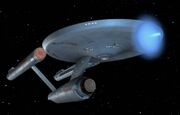
Enterprise hit by magnetic pulses
Coded orders from Starfleet Command to the USS Enterprise disclose that negotiations with the Klingon Empire are on the verge of collapse and that Starfleet expects a surprise attack. The Enterprise is ordered to Organia , a peaceful, Class M planet in the disputed area, to prevent the Klingons from using it as a base of operations.
En route, a Klingon vessel suddenly attacks the Enterprise with magnetic pulses . Kirk orders the phaser banks to lock on and return fire. After a brief weapons exchange, the Enterprise destroys the Klingon ship with a proximity blast set at a 100% dispersal pattern. Lieutenant Uhura receives a Code One alert from Starfleet : War with the Klingons has begun and Captain Kirk resolves to reach Organia " before the hammer falls ", as the trigger has now been pulled.
Act One [ ]
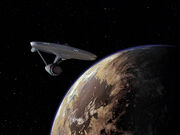
Organia in 2267
Assuming orbit , Kirk and Spock beam down to the planet, leaving Lieutenant Sulu in charge, with specific duties " to the Enterprise , not to us " and, if outnumbered, to avoid combat and immediately warn Starfleet.
Upon beaming down to the surface of Organia, Kirk and Spock find a primitive, agrarian society whose people seem curiously unconcerned about visitors materializing within their midst — which makes Kirk wonder " Do they have people beaming down every day? " Ayelborne welcomes them, but tells Kirk " We don't have anyone in authority. " But, as Chairman of the Council of Elders , he invites them to the Council chambers. Ayelborne agrees to Spock's request to look around the village so he may get some tricorder readings.
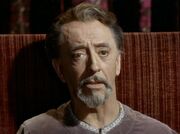
Ayelborne greets the landing party
However, the councilors tell Kirk they have no need of protection nor defenses; they do not believe the Klingon invasion poses any threat to their people or their culture or way of life. While they recess to discuss Kirk's offer, Spock discloses that the culture has not advanced for as far back as his tricorder can measure; Organia is " an arrested culture. "
The Council's discussions result in no change, and they can see no benefit to affiliation with the Federation . Then the Klingon fleet of D7-class battle cruisers arrives – a fact Councilor Trefayne somehow seems aware of before even Spock can confirm it with his tricorder, surprising him and Kirk.
The Enterprise is forced to leave, stranding Kirk and Spock amid a Klingon occupation army , led by Kor .
Act Two [ ]
The Organians provide Kirk and Spock with native clothing, but take their weapons. Kirk is now Baroner , a leading Organian citizen, while Spock is a Vulcan merchant dealing in kevas and trillium . But Kor considers Spock a spy, since Vulcans are members of the Federation, and takes him in for questioning. When Kirk protests, Kor decides that Kirk is " a man I can deal with " as his liaison to the civil population.
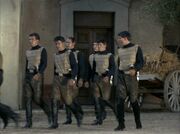
Klingon invasion forces on Organia
The examination, performed with the mind scanner , does not pierce Spock's pretense, and he is released. Kirk has been instructed in his duties as liaison, and both men are released to go about their business. Formulating a plan to fight against the Klingons, Kirk and Spock destroy a Klingon ammo dump – and find that the Organians are appalled by the mere thought of violence. Kirk tells Ayelborne that the Organians can resist a military dictatorship, but Ayelborne replies that Kirk simply doesn't understand them. Unfortunately, Kor has the Council chamber under surveillance and hears everything.
Act Three [ ]
Ayelborne, learning Kor's plan to interrogate Kirk with the mind sifter, reveals Kirk's identity. Betrayed, Kirk and Spock are taken prisoner and threatened. But Ayelborne remains placid, assuring Kirk that no harm will come of it. Kirk and Kor discuss their differing ideologies; Kor is pleased that the universe is full of people who don't like the Klingons. Kirk is given twelve hours to answer questions about Starfleet's starship deployments; otherwise, he will be subjected to the mind sifter, becoming a vegetable, and Spock will be dissected to determine how he can resist it. Kirk tells Kor he will need a lot more than twelve hours to get the necessary information out of him. Kor tells Kirk that he will get the necessary information from him at the designated time as war is a game that the Klingons intend to win.
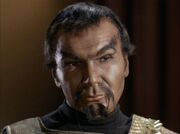
Kor confronts the Organians
With just over six hours left, the cell door opens, but it is Ayelborne, offering them safe passage back to the Council chambers, where he assures them the Klingons will not come. Kirk cannot understand how their betrayer is now their rescuer. He does not initially trust Ayelborne, but as the Organian informs him he has very little choice. When asked where the two Klingon guards are, Ayelborne simply states nothing happened to them.
When informed of the escape by his lieutenant , Kor is furious. The Klingon officer reports that the two Klingon guards were simply not there with no other exit. Kor gives a Special Occupation Order 4 . Kirk, Spock and the Organians hear disruptor fire and, on the loudspeakers, that hostages will be killed: two hundred immediately, and two hundred more at two hour intervals until the "Federation spies" are returned.
Act Four [ ]
Kirk plans a suicide assault on Kor's stronghold that evening to save Organian lives. The council returns the officers' phasers , then confer privately that, " Of course, we cannot allow it. "
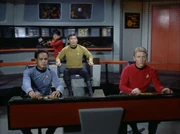
Sulu leads the Enterprise into battle
Darkness falls, and Kirk and Spock begin their assault, resolving to stun and not kill, as " we're after the top dog. " They disable Kor's lieutenant and gain entry to Kor's office. Kirk doesn't plan to kill Kor; Kor wants to discuss the prospects for war, on the surface and in space. For example, even Kor's office is under surveillance.
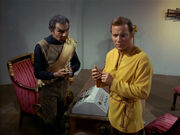
Kor and Kirk upon learning of the cease-fire "enforced" by the Organians
But, as Klingon troops stream in, everyone's weapons become too hot to handle — and the same is true on every ship in both warring fleets. Ayelborne and Claymare enter Kor's office, apologize for being forced to intervene, but announce that they have put a stop to the violence.

Organians in their true form
Ayelborne states that, as he stands before Kirk and Kor, he also stands on their respective homeworlds, Earth and Qo'noS . Both sides must agree to cease hostilities, or their armed forces will be immobilized. While insisting that nobody wants war, Kirk seems equally annoyed at its interruption as is Kor. He states they have legitimate grievances and that they have a right to handle it as they see fit. Ayelborne tells them that in the future , their races will eventually become fast friends and will work together, which Kor finds unbelievable. Claymare says the visitors' discordant emotions require that they must leave. Ayelborne discloses that none of the two hundred Organian hostages have been killed, and what Kirk and Kor see is merely for appearance. The Organians have over millions of years evolved beyond the need for physical bodies, and have become advanced and powerful energy beings. Kirk and Spock work out themselves that Organia's outward appearance was solely to provide points of reference for visitors. Ayelborne and Claymare disappear before Kirk, Spock and Kor's eyes, changing from human form into very bright pure energy. Kirk turns to Kor and tells him it looks like they will not be going to war after all. " A shame, Captain. It would have been glorious, " the Klingon commander states.
Back on board the Enterprise , Kirk admits to Spock at being embarrassed that he was furious with the Organians from preventing a war with the Klingons – a war he did not want. Kirk tells Spock that they often think of themselves as the most powerful force in the universe , it's unsettling to find out they ultimately are not. Spock tells Kirk that he and himself have no reason to be embarrassed; it took millions of years for the Organians to evolve into what they are now. Spock points out that even the gods did not come into being overnight. Spock also says that at least they beat the odds in not dying on the planet. Kirk tells Spock he is wrong, as they didn't have a chance at beating the odds. " The Organians raided the game. "
Log entries [ ]
- Captain's log, USS Enterprise (NCC-1701), 2267
Memorable quotes [ ]
" War. We didn't want it, but we've got it. " " Curious how often you Humans manage to obtain that which you do not want. "
" I'm a soldier, not a diplomat. I can only tell you the truth. "
" This is the ruling council? " " I am Ayelborne, temporary head of the council. I bid you welcome. " " No doubt you do. I am Kor, military governor of Organia. "
" Have we a ram among the sheep? "
" I don't trust men who smile too much. "
" You don't have to be sheep. You can be wolves. "
" Always it is the brave ones who die. The soldiers. "
" What would you say the odds on our getting out of here? " " Difficult to be precise, Captain. I should say approximately 7,824.7 to one. " "Difficult to be precise? "
" Attention. Attention, all Organians. Attention. This is Commander Kor. The two Federation prisoners have escaped, obviously with outside aid. They will be returned immediately. So that you will know we mean what we say… listen. " " Those are Klingon phasers. Take the door. Get down, gentlemen. " " In the courtyard of my headquarters, two hundred Organians have just been killed. " " Two hundred of them… " " In two hours, two hundred more will die, and two hundred more after that until the two Federation spies are turned over to us. This is the order of Kor, son of Rynar. "
" Today we conquer! Oh, if someday we are defeated … well … war has its fortunes. Good and bad. "
" We have the right – " " To wage war, Captain? To kill millions of innocent people? To destroy life on a planetary scale? Is that what you're defending? "
" It is true that in the future, you and the Klingons will become fast friends. You will work together. "
" I should say the Organians are as far above us on the evolutionary scale as we are above the amoeba. "
" Well, Commander, I guess that takes care of the war. Obviously the Organians aren't going to let us fight. " " A shame, Captain. It would have been glorious. "
" Even the gods did not spring into being overnight. "
" You and I have nothing to be embarrassed of. We did, after all, beat the odds. " " Oh no, Mr. Spock, we didn't beat the odds, we didn't have a chance. The Organians raided the game. "
Background information [ ]
Story and script [ ].
- This episode marks the first appearance of the Klingons. Story editor Dorothy Fontana thought the Klingons were made the regular adversaries of the series because they didn't need any special (and expensive) make-up like the Romulans , whom she thought to be much more interesting. [1]
- Ayelborne mentions that in the future, the Federation and the Klingons would be friends and work together, both of which become true.
- The episode title comes from The Life and Adventures of Nicholas Nickleby by Charles Dickens : " It is an errand of mercy which brings me here. Pray, let me discharge it. "
- In the script, the Klingons were described simply as "Oriental, hard-faced." [2]
- According to the script, the Organian village was to be modeled on old English villages, with thatched huts and muddy back alleys.
- This is the first episode in which Sulu is shown sitting in the command chair, although he had previously commanded the bridge from the helm position in " Arena ". Scott , who doesn't appear in this episode, had commanded the Enterprise in the absence of Kirk and Spock in " A Taste of Armageddon ", in which Sulu didn't appear. The second season would establish Scott as senior to Sulu in the command structure.
- DeForest Kelley ( McCoy ) and James Doohan ( Scott ) do not appear in this episode. Along with " What Are Little Girls Made Of? " and " The Menagerie, Part II ", this is one of only three episodes after the two pilots in which Kelley does not appear. This was also McCoy's last non-appearance in TOS. It was not until season 2 that the two encountered Klingons.
- This was the first appearance of John Colicos as Kor . The character was also set to appear in " Day of the Dove " and " The Trouble with Tribbles ", but Colicos was unavailable and other Klingon characters were written in. A script was written for Kor for the fourth season, but the show was canceled after the third season, and he never got his chance to appear again (Kor did appear in TAS : " The Time Trap ", but was voiced by James Doohan ). Colicos was also the person who gave the Klingons their dark-skinned, mustached look. He said he was going for the " Genghis Khan " look. Makeup artist Fred Phillips agreed on it, and conceived the Klingons in this fashion. [3] He did eventually reprise his role in DS9 : " Blood Oath ", " The Sword of Kahless ", and " Once More Unto the Breach ".
- Colicos was director John Newland 's first and immediate choice for the role of Kor. He got the script only two hours before flying to Los Angeles from Toronto, and read it on the plane. [4]
- Victor Lundin played the tall Klingon lieutenant who returns Spock to Kor's office following the level 4 mind scan. Lundin's character can also be seen in Kor's office reporting the escape of prisoners Kirk and Spock. Victor also appears in a scene as the Klingon which Kirk chokes into submission with a belt cord; followed by Spock's administration of an incapacitating neck pinch. One of Lundin's most notable roles just prior to this timeframe was the part of Friday on the film, Robinson Crusoe on Mars .
- The unknown actor usually portraying Bobby appears as one of the Klingon Guards outside Kor's office at the end of the episode.
Costumes [ ]
- The baldric that Kor wore was reused for Worf during TNG's first season . ( Star Trek: The Next Generation Companion , 3rd ed., p. 20) When it was exhibited at the Smithsonian Institution as part of a Star Trek retrospective in the 1990s, the material could clearly be seen to be burlap sacking, painted gold.
- The same exhibit showed that the buckles of the Klingon belts were pieces of bubble pack, with the bubbles painted silver to resemble metal studs.
Sets and props [ ]
- This is one of only two episodes that show an actual Klingon flip-top communicator (shown when Kor contacts his fleet), which is similar to, but smaller than, the Starfleet version. The other episode is " Elaan of Troyius ". The communicator was recycled from the Eminian version from " A Taste of Armageddon ". It appears that Kor uses "texting" and wireless telemetry – possibly one of the first uses of the now common wireless technology in film/TV media.
- Also recycled and reworked from "A Taste of Armageddon" are the sonic disruptor pistols, first used here by the Klingons and later by the Romulans.
- The boxes in the Klingon munitions dump were spray-painted corrugated cardboard containers.
- The main gate to the Organian village, where Ayelborne greets Kirk and Spock was previously the gate to the Rigel VII castle in " The Cage ". The stairs on which Spock and Kirk phaser the Klingon guards are the same set where Christopher Pike battled the Kalar in the original pilot. Location filming for both episodes were done at the "Arab Village" portion of the famous 40 Acres back lot. [5]
- The entrance of the Klingon headquarters is the same building as the main gate to the Organian village, filmed from a longer distance and different angles. [6]
- The scene where Kirk and Spock stun the guards and break into the Klingon headquarters was filmed in sunlight using a " day-for-night " filter. [7]
- The view of the citadel at the beginning of Act One is a stock footage shot of the Citadelle Laferrière in Haiti . [8] The script specified for a matte painting to be used, but the stock footage shot proved to be much more cost-effective. ( These Are the Voyages: TOS Season One )
- Since only the bridge set was used in this and the previous episode (" The Devil in the Dark "), most other Enterprise sets were temporarily demolished to make room for additional swing sets depicting Organia interiors on Desilu Stage 9 in addition to the usually used Stage 10 . ( These Are the Voyages: TOS Season One )
Effects [ ]
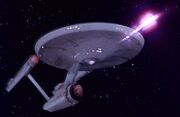
Enterprise fires phaser bursts
- The shot of the Enterprise hit by magnetic pulses was a stock shot of energy bolts hitting the ship, the corresponding live-action sequences used a buzzing electric effects theme – that would be reused for the Klingon Bird-of-Prey firing effect in Star Trek III: The Search for Spock . The shot of Enterprise firing was also a reuse, this time the white bolts shot out of the ship are said to be phasers, even though in other appearances the same effect represents photon torpedoes . The script, written by producer Gene Coon, specified that the battle shall be depicted using stock footage from " Balance of Terror " and " Arena ". ( These Are the Voyages: TOS Season One )
Continuity [ ]
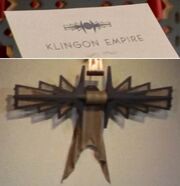
The original Klingon emblem
- The emblem of the Klingon Empire shown in this episode is replaced by the time " Elaan of Troyius " occurs.
Other information [ ]
- This is the last episode in which the term "Vulcanian" is used to refer to Vulcans . Both "Vulcanian" and "Vulcan" are used at different points in the episode: Kor uses "Vulcanian" and the Klingon lieutenant uses "Vulcan", both in reference to Spock.
- A comic book published by IDW Comics in April 2007 , " Against Their Nature ", told this story from the Klingon point of view.
- The Bantam paperback Star Trek: The New Voyages included a story called "Mind Sifter" which described the horrific aftereffects of the Klingon torture instrument on Kirk.
- A reference to the events of this episode would appear in the Star Trek: Deep Space Nine episode " The Sword of Kahless ", when Jadzia Dax introduces Worf to Kor, Worf tells Kor he had heard stories about Kor since he was a child including Kor's confrontation with Kirk on Organia.
- Kevas and trillium are later mentioned in DS9 : " Trials and Tribble-ations " as a tribute to this episode. Also, a 1970s Star Trek fanzine was named "Kevas and Trillium". ( The World of Star Trek )
- The Organians are seen once again in the Star Trek: Enterprise episode " Observer Effect ". In that story, two Organian observers visit the Enterprise NX-01 to witness how Humans deal with a silicon-based virus (a long-standing test for many galactic races). In the course of the story, one Organian influences the outcome (in this case, saving three lives), a violation of their rules about non-interference, rules that by this story have been relaxed. The lead researcher also comments that preparations for first contact with Humanity will begin, a process that should take approximately "five thousand years" – the arrival of the Enterprise and the Klingon vessel in "Errand of Mercy" negates that prediction.
- The American synth-pop group Information Society famously used a quote from this episode of Spock saying "pure energy" in their 1988 song " What's on Your Mind (Pure Energy) ". These two words were taken from Spock's line towards the end of the episode: " Fascinating. Pure energy. Pure thought. Totally incorporeal. Not life as we know it at all. "
- The 2013 video game Star Trek uses this episode's title as a chapter title.
Apocrypha [ ]
- In the Star Fleet Universe it is explained that the Organians' powers only work within their own star system and thus they were unable to truly prevent large scale wars. Their actions in the episode to stop the Federation-Klingon war were largely a bluff. Eventually they would enlist the Interstellar Concordium to impose order on all of the local races.
- However, TOS comics set between Star Trek II: The Wrath of Khan and Star Trek III: The Search for Spock contradict this. The comics claim that the Organians prevented the two powers from going to war at all. Eventually a war does break out, courtesy of manipulation by Yarnek and the Excalbians . Kirk eventually convinces the Excalbians and the Organians to fight each other, and as the Organians disappear, they lose control over the Federation and the Klingons.
- In the 1970 novel Spock Must Die! , the Klingons envelop Organia with an energy shield in order to neutralize the Organians' abilities to prevent war between the Klingons and the Federation. Eventually the plot is discovered and the shield is disabled, and in retribution, the Organians deny spaceflight capability to the Klingons for a thousand years.
- According to the novel The Sorrows of Empire , the Treaty of Organia was signed between the Terran Empire and the Klingon Empire in the mirror universe during the 2260s , suggesting that a version of the events of this episode also occurred in that universe.
Production timeline [ ]
- Story outline by Gene L. Coon : mid- December 1966
- First draft teleplay by Coon: late- December 1966
- Second draft teleplay: 3 January 1967
- Final draft teleplay: 6 January 1967
- Revised final draft teleplay: 23 January 1967
- Additional revisions: 26 January 1967
- Day 1 – 26 January 1967 , Thursday – Desilu Stage 9 : Int. Bridge , Dungeon
- Day 2 – 27 January 1967 , Friday – 40 Acres ("Arab Village" backlot): Ext. Organian village , Klingon headquarters entrance
- Day 3 – 30 January 1967 , Monday – Desilu Stage 9 : Int. Dungeon , Council chambers
- Day 4 – 31 January 1967 , Tuesday – Desilu Stage 9 : Int. Council chambers
- Day 5 – 1 February 1967 , Wednesday – Desilu Stage 10 : Int. Kor's office
- Day 6 – 2 February 1967 , Thursday – Desilu Stage 10 : Int. Kor's office , Klingon headquarters corridors
- Original airdate: 23 March 1967
- First UK airdate (on BBC1 ): 13 December 1969
- First UK airdate (on ITV ): 28 February 1982
- Remastered airdate: 12 May 2007
Remastered information [ ]
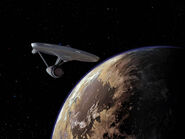
The remastered version of "Errand of Mercy" aired in many North American markets during the weekend of 12 May 2007 . The episode was heavy in new effects, with unique CG shots of Organia from orbit, replacing the stock footage used to represent other planets including Alfa 177 , M-113 , and Gothos . The Klingon battle was significantly expanded, with shots of a fleet of D7-class battle cruisers bombarding the Enterprise with blue-colored weapons fire. The Organians themselves were also modified, with more refined computer graphics inserted into the episode that remained true to their original appearance. [9]
Video and DVD releases [ ]
- Original US Betamax release: 1985
- UK VHS release (two-episode tapes, CIC Video ): Volume 15 , catalog number VHR 2311, release date unknown
- US VHS release: 15 April 1994
- UK re-release (three-episode tapes, CIC Video): Volume 1.10, 13 January 1997
- Original US DVD release (single-disc): Volume 14, 11 July 2000
- As part of the TOS Season 1 DVD collection
- As part of the Star Trek: Fan Collective - Klingon collection
- As part of the TOS Season 1 HD DVD collection
- As part of the TOS Season 1 Blu-ray collection
- As part of the Star Trek: The Original Series - Origins Blu-ray collection
Links and references [ ]
Starring [ ].
- William Shatner as Capt. Kirk
Also starring [ ]
- Leonard Nimoy as Mr. Spock
Guest stars [ ]
- John Abbott as Ayelborne
- John Colicos as Kor
Featuring [ ]
- George Takei as Sulu
- Nichelle Nichols as Uhura
- Peter Brocco as Claymare
- Victor Lundin as Lieutenant
- David Hillary Hughes as Trefayne
- Walt Davis as Klingon Soldier
- George Sawaya as Second Soldier
Uncredited co-stars [ ]
- Bobby Bass as Klingon soldier
- William Blackburn as Organian villager
- John Blower as Organian villager
- Gary Combs as Klingon soldier
- Organian villager
- Eddie Paskey as Leslie
- Basil Poledouris as Klingon soldier
- Paul Power as Organian elder
- Tom Steele as Klingon soldier
- Klingon soldiers 3 , 7 , 8 , 9 , 10 , and 11
- An Organian elder
- Five Organian male villagers
- Sciences navigator
- Five Organian female villagers
- Crew woman 1
- Operations crew woman
References [ ]
ability ; admiration ; all hands ; all-points relay ; altruism ; amoeba ; amount ; antimatter pods ; area ; armed forces ; Armenia ; army ; arrested culture ; authority ; backbone ; Baroner ; base ; base of operations ; battle ; battle stations ; bearing ; being ; Belgium ; betrayal ; boasting ; body ; buckling ; building ; business ; cabinet ; captor ; castle ; casualty ; chairman ; chance ; checkmate ; chemical explosive ; choice ; citadel ; citizen ; D7-class ; class M ; " climb a tree "; Code One alert ; coded directive tape ; commander ; communications device ; confiscation ; contact ; council ; council chambers ; Council of Elders ; courage ; course ; courtyard ; crate ; crime ; culture ; D7-class ( ship , fleet ); damage control ; damage report ; danger ; day ; dealer ; death ; death penalty ; debris ; deflector screen (aka automatic deflector screen ; screens ); degree ; delayed-action fuse ; democratic body ; destiny ; diplomat ; disease ; dissection ; dog ; door ; Earth ; efficiency ; emotion ; enemy ; enemy alien ; engineering control ; environment ; environmental control ; evidence ; evolution ; evolutionary scale ; examination room ; " excuse me "; experience ; eye ; Federation-Klingon War ; Federation territory ; field ; first officer ; fleet (aka star fleet ); feet ; fortress ; freedom ; friend ; fuse ; game ; general alert ; gods ; grievance ; guard ; hall ; hammer ; harm ; hate ; head ; headquarters ; heat ; here and now ; history ; hostage ; hour ; Human ; humanoid ; hundred ; hunger ; hunter ; idea ; identification ; ideology ; incorporeal ; information ; intuition ; invasion ; job ; kevas ; killer ; Klingon ; Klingon Empire ; Klingon phaser ; knowledge ; laboratory specimen ; labor camp ; leader ; liaison ; liar ; lieutenant ; location ; logic ; machine ; magnetic pulse ; material transmission unit (aka transporter ); mechanization ; mental vegetable ; merchant (aka trader ); mercy ; military dictatorship ; military forces ; military governor ; Milky Way Galaxy ; million ; millions of years ago ; mind ; mind scanner (aka mind ripper , mind sifter , truth finder ); minute ; mission ; money ; munitions dump ; negotiation ; neighborhood ; occupation ; occupation army ; odds ; " of course "; opinion ; Organia ; Organia's sun ; Organian ; Organian goat ; Organian Peace Treaty ; Organian village ; pack ; peace ; penal planet ; persuasion ; phaser ; phaser bank ; phaser crew ; place ; point of reference ; population ; power ; predator ; primitive society ; prison cell ; prisoner ; proclamation ; progress ; public assembly ; public facility ; publication ; Qo'noS ; quadrant ; quarterly physical ; question ; ram ; range ; rebellion ; reception committee ; representative ; reputation ; result ; reward ; Richter's scale of cultures ; ruins ; rule ; saboteur ; savage ; science ; school ; sentimentality ; sheep ; slave labor ; smile ; society ; soldier ; sonic grenade ; space vehicle ; Special Occupation Order 4 ; specialist ; species ; spy ; standard orbit ; " stand by "; space ; Starfleet ; Starfleet Command ; storekeeper ; subject ; surface ; surveillance ; technician ; temperature ; tens of thousands of years ago ; terror ; " the top dog "; thing ; thought ; thousand ; tiger ; toast ; tongue ; tool ; trade ; training ; tree ; trick ; tricorder ; trigger ; trillium ; truth ; ultimatum ; understatement ; Unit XY-75847 ; Unit XY-75847's sector ; United Federation of Planets ; universe ; victory ; violence ; Vulcan ( Vulcanian ); Vulcan (planet) ; Vulcan neck pinch ; wall ; war ; way of life ; wolves ; year
External links [ ]
- "Errand of Mercy" at StarTrek.com
- " Errand of Mercy " at Memory Beta , the wiki for licensed Star Trek works
- " Errand of Mercy " at Wikipedia
- " Errand of Mercy " at MissionLogPodcast.com , a Roddenberry Star Trek podcast
- 2 USS Enterprise (NCC-1701-G)
- 3 Star Trek: The Next Generation

Creating the Klingons
We now know the Klingons as a people driven by honor and tradition, but they started out as the opposite. The Making of Star Trek , co-authored by Gene Roddenberry while The Original Series was still in production, describes the “number-one adversary of the Federation” as “[m]ore powerful than the Romulans” and “less admirable characters.”
Their only rule of life is that rules are made to be broken by shrewdness, deceit or power. Cruelty is something admirable; honor is a dispicable trait. They will go out of their way to provoke an incident with the Federation.
The Next Generation and Deep Space Nine would reverse the roles, with the Romulans becoming duplicitous and never striking the first blow.
The Original Series
The Making of Star Trek goes on to describe the Klingon Empire as an “absolute dictatorship” where assassination is common:
Their society is totally devoted to personal gain by the cleverest, strongest or most treacherous. As a result, their vessels often operate much like “privateers” and warlike acts are a way of life. Life on all levels is completely supervised and extensive use is made of “snooping devices” to help maintain total control.
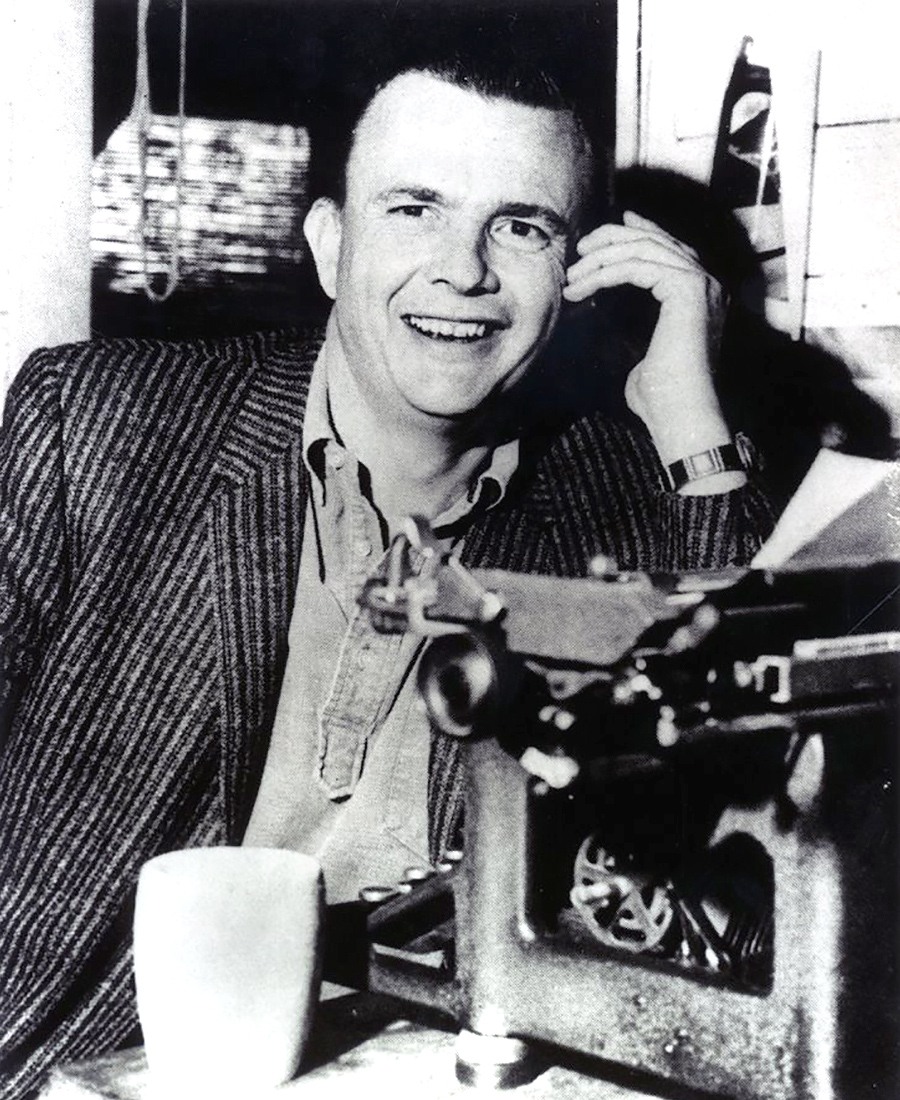
Gene Coon, who wrote the episode “Errand of Mercy” in which the Klingons first appeared, deliberately modeled the species on America’s communist rivals in the Cold War: primarily Russia, to a lesser extent China. Much like the proxy wars of the twentiethe century, the Federation and the Klingons supported opposing sides in a civil war in “A Private Little War”.
The Klingons were allowed no redeeming qualities. Producer Robert Justman wrote to fellow producer Fred Freiberger at the time “Day of the Dove” was being made:
[L]et us never set up a situation whereby those adversaries of ours give any indication of ever being anything but highly aggressive and self-seeking opponents.
Gene Roddenberry disagreed. During the 1990 SeaTrek cruise, Majel Barrett recalled that her husband “never did like the Klingons, because they were represented as being ‘all bad.’ Gene said, ‘There is no such thing as a whole race that is all bad.’ He really hated that.”
The script of “Errand of Mercy” described the Klingons as “Oriental”-looking. Beyond that, makeup designer Fred Phillips had little to go on. “I had never heard of a Klingon before,” he is quoted as saying in These Are the Voyages: TOS Season One . “And nothing in the script that I read told me what it was.”

John Colicos, the actor who played the Klingon commander Kor in “Errand of Mercy”, had a significant influence on the makeup design. He proposed to take inspiration from Genghis Khan, another ambitious military commander, and Dr Fu Manchu. Phillips “thought that was a hell of a good idea,” Colicos told Star Trek: Communicator in 1995.
The look took only about 20 minutes to apply, according to Colicos, and it was relatively cheap. As a result, the Klingons replaced the Romulans as Star Trek ’s favorite villains.

For the aborted Star Trek television series Phase II , John Meredyth Lucas wrote a two-part episode “Kitumba” that would have radically changed Klingon culture and society.
Lucas, who had produced half of the second season of The Original Series , borrowed from Japan give the Klingons a god-like ceremonial head of state, called the Kitumba, who resides on a Sacred Planet. Day-to-day authority would rest with a Warlord — analogues to the Japanese shogun — who lives on Ultar, the Klingon home world.
The story would have revealed that only members of the warrior caste are called “Klingons”. They are served by technicians and subjects.
The Next Generation established the existence of a Klingon High Council, chaired by a chancellor. But the emperor returned in “Rightful Heir”, when a Kahless clone is elevated to the long-vacant Klingon throne.
Fred Phillips was given the chance to recreate the Klingons for Star Trek: The Motion Picture , which had a much bigger budget, but it was costume designer Robert Fletcher who invented the now-distinctive Klingon cranial ridges.

“I did sketches for the Klingon, including the knobby forehead and head,” Fletcher said in an interview for the 2002 DVD of Star Trek III .
The Makeup Department, very generously, said, “That’s great, we’d like to use it.” Gene Roddenberry was not too enthusiastic. He thought they should look more like just people. I said, “Yes, but these are real aliens, and they’re evil aliens.” I think the people, the audience, wants to see something that is not just folks, that goes beyond just folks.
Roddenberry came around and suggested that the cranial ridges might be an outgrow of the Klingon spinal cord, proceeding up the back of the neck and over the head.
Fletcher agreed:
In my mind, all the bumps on the forehead and so forth are vestigial remains of a people that evolved like crustaceans, like lobsters, who have their skeleton on the outside of their bodies.
The makeup went through various iterations. The final product was uncomfortable for the actors to wear. Mark Lenard, who played one of the Klingon commanders in the movie, recalled in an interview with Starlog that the nose piece, which extended down from the upper area of the head piece, over the actor’s nose, was “pretty warm” and itched.

Fletcher refined the Klingon look for Star Trek III , telling Cinefantastique in 1987:
There had never been a good marriage between the forehead appliance and the actors’ faces. We tried to keep them in character rather than have these obstructive things on their heads.
Applying the makeup took two hours per actor each day. By the time of Star Trek IV , John Schuck, who played the Klingon ambassador, spent up to four-and-a-half hours in makeup before shooting.

The Klingon costumes were inspired by Japanese culture. Fletcher is quoted in The Making of the Trek Films as saying, “I always liked to think of them as authoritarian, almost feudal, like Japan had been.”

William Campbell, who had played Koloth in “The Trouble with Tribbles”, and who would reprise the role three decades later for the episode “Blood Oath” of Deep Space Nine , said during the 1991 SeaTrek cruise that he had a “difficult time” with the makeup changes:
When they did the first movie, it looked like the Klingons had gone through some metamorphic stage. In the classic series, the Klingons looked like humans. I never understood the reasoning behind the extensive makeup change except for the reason that it is a new show.
Roddenberry and Phillips came up with the explanation that there might be different Klingon races, but this was never mentioned on screen.
The Next Generation
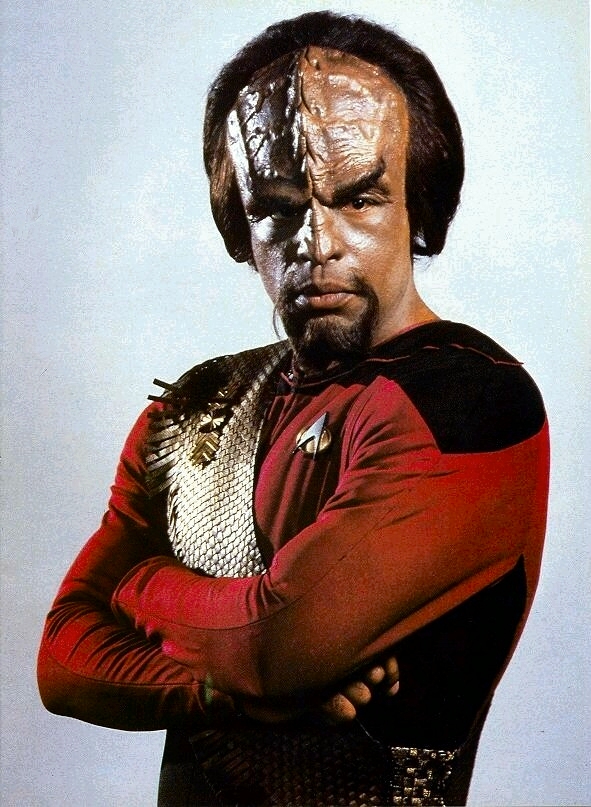
Roddenberry initially wanted no Klingons, nor Romulans, on The Next Generation in order to differentiate it from The Original Series . Writer and Co-Producer Herb Wright claimed credit for softening Roddenberry’s position in an interview with Cinefantastique in 1992, “by squeezing a Klingon on the bridge.”
It was Justman who provided the most persuasive argument: putting a Klingon in Starfleet would be a great way to show that a century had passed since the original show, and that both human and Klingon attitudes had grown.
Dorothy C. Fontana, a veteran writer of the first Star Trek , agreed there would be story opportunities if the second showed the Federation and the Klingons at peace.
Roddenberry relented, which led to the creation of Worf. But he was still adamant that there would be “no stories about warfare with Klingons” on The Next Generation , and that these Klingons should be different.
Michael Dorn, who had watched the original Star Trek growing up, recalled in a 1991 interview with The Official Star Trek: The Next Generation Magazine that Roddenberry told him, “Forget everything you’ve ever read or heard about Klingons.” Klingons would have redeeming qualities after all.

Makeup artist Michael Westmore could borrow from the movies to create Worf’s look. He also wanted to add something of his own, writing in the Star Trek: The Next Generation Makeup FX Journal that he got Roddenberry’s and Producer Rick Berman’s permission “to lend a little more ferocity to their overall appearance.”
Westmore made the forehead ridges more pronounced, so they were more visible on the small television screen. “I took it a step further,” he told Cinefantastique in 1991, “and brought it into their nose area, so it doesn’t just look like a forehead that we’ve added on.”

Westmore and his team created a different ridge pattern for every Klingon — a decision he would quickly regret:
It was the beginning of what I would eventually call “Klingon Hell”: the self-imposed task of sculpting a new and different head for virtually every Klingon actor.

Maurice Hurley, the Season 1-2 producer who co-wrote “Heart of Glory”, believed the Klingons helped bring a sense of balance to the series. “The show gets so intellectually smug and self-serving,” Edward Gross and Mark A. Altman quote Hurley as saying in Captains’ Logs: The Unauthorized Complete Trek Voyages . “With the Klingons you’re dealing with emotion and passion,” and that’s something The Next Generation needed every now and then: “someone willing to storm the barricades.”
Ron Moore fleshed out these concept. His first script, “The Bonding”, was Moore’s ticket aboard the Star Trek staff.

“I didn’t start out with the intention of focusing on Worf,” he told Cinefantastique in 1990. But when Michael Piller, who had by then taken over from Hurley as producer asked him to combine two stories into a script that would become “Sins of the Father”, Moore had the chance to put his mark on Klingon culture.
“They had these real intricate codes of honor and poetry, like the samurai,” Moore told Star Trek: The Magazine years later.
They were also like the Vikings; they were big, brawling, larger than life, they liked to drink and sing big songs like the Vikings, or at least our conception of the Vikings. That was where I began with the culture.
Contradicting The Original Series , Moore insisted that Klingons weren’t “evil, tyrannical pirates bent only on pillage and plunder.”
They have a strict, almost unyielding code of ethics and honor and take their responsibilities as rulers seriously. … Klingons respect courage, strength and cunning, in that order … Klingons respect the declared war, the killing stroke, the blood feud, death in the field of battle and clear positions of hostility.

Moore also argued it was time to stop thinking about the Klingons as Star Trek ’s version of the Soviet Union:
The place where the Russians were when I was doing the Klingon shows just wasn’t as relevant any more. The [Berlin] Wall had fallen and it was all about the collapse of this empire, and what they were going to do internally, and how do they become a democracy. I didn’t want to take the Klingons down that road, because it would have essentially defanged them, and I liked keeping them more dangerous.
One Russian influence remained: like the Communists who once governed the Soviet Union, the Klingon elite didn’t live up to its stated ideals.
That was one of the great contradictions of the empire; the society is built around a concept of being honorable, but those principles are often sacrificed and compromised by people like Duras.
Conspiracy, intrigue, larger-than-life personalities — the Klingons lend themselves to what Moore described as “Shakespearean” drama. “It made it more interesting if it wasn’t quite so clear whose side was right.”
Klingon women
The writers’ bible of The Original Series claimed the Klingons had “no patience with women, even their own, and treat them as sometime useful animals.”
“Dave of the Dove” had suggested that wasn’t entirely true. There were two women in Kang’s crew.

Moore established in “Redemption” that women were not allowed to serve on the Klingon High Council (although a female Klingon had been present in the Great Hall during “Sins of the Father”). It differentiated them from the Federation and the Romulans, he argued: Klingons were “a traditionally patriarchal society, even if many elements have disappeared with time.”
Indeed, from Kahlest (Thelma Lee), who calls the Klingon chancellor “fat” to his face, to Worf’s love interest K’Ehleyr (Suzie Plakson) to the Duras sisters (Barbara March and Gwynyth Walsh), none of the Klingon women of The Next Generation seemed particularly deferential to patriarchy.
Improved makeup
The appearance of ever more Klingons forced Westmore to give up his practice of creating a unique look for each one. “Instead of making a cast of each actor’s head,” he explains in Star Trek: The Next Generation Makeup FX Journal , “I would measure their head when they walked in the door.”
If their head size was close to that of a preexisting mold, we would create our new design on an available head mold. Quite often, if we had two actors with similarly-sized heads, I would sculpt the first forehead design and after taking a mold from it, the clay sculpture would still be intact. This would eliminate the need for “basing it up”; the process of putting the clay on the mold.
Rather than spend a whole day on a new sculpture, Westmore would be able to resculpt the second head design in three or four hours.

William Shatner gave Westmore’s counterpart on the fifth Star Trek motion picture, Richard Snell, leeway to experiment with different forehead designs. “I always felt that their foreheads should be like a thumbprint,” Snell told Cinefantastique , “and on V , Shatner said, ‘Go ahead, make ’em different.’ I thank him for that. That opened the door and now the sky’s the limit.”
Michael J. Mills, one of Snell’s makeup artists, recalled in a 1992 interview with Cinefex that Nicholas Meyer gave slightly stricer instructions on Star Trek VI : “He wanted the audience to watch the actors’ faces and not be distracted by the makeups. So every one had to be a custom job – which translated out to be about three-and-a-half hours.”
Deep Space Nine

When Moore transitioned from The Next Generation to Deep Space Nine , he felt Klingon culture had been established well enough to poke some fun at it. “This is a point where you’re saying they are kind of silly,” he told Star Trek: The Magazine in 2000. “Let’s enjoy that and laugh at them. Not make them look like fools, but let’s not kid ourselves; they do some pretty crazy stuff.” The Klingons of Deep Space Nine were rambunctious, but the Dominion War arc also gave them the chance to prove that they really were brave warriors.
In an attempt to persuade more Next Generation viewers to switch to Deep Space Nine , Michael Dorn joined the third series in its fourth season. “The Way of the Warrior” put Worf and the Klingons front and center.
The writers initially toyed with a Vulcan exit from the Federation, but Ira Steven Behr suggested it should be the Klingons who break off diplomatic relations. “That might have more heat to it.” Rick Berman loved the idea.
So did Dorn, who told Jeanne M. Dillard for the book Star Trek – Where No One Has Gone Before that allowing the Federation and Klingons to be at war again “makes the Klingon characters what they were originally created to be.”

“Trials and Tribble-ations” forced Deep Space Nine to reckon with the still-unresolved issue of the Klingons’ changed appearance from The Original Series . But even Moore, who created so much of Klingon culture, couldn’t think of a simple way to explain the discrepancy.
So we just said, “Just have Worf say it’s a long story and leave it at that, you know? And that’s fine.” And it’s a wink and a nod to the audience, like, “Okay, we know this doesn’t make sense. Just go with us, okay?”
Judith and Garfield Reeves-Stevens ultimately came up with an explanation for Star Trek: Enterprise : in an attempt to create a biological weapon, Klingon sciencists inadvertently unleashed a virus that smoothened out the Klingon forehead.

Moore did rethink the limited role of Klingon women. While writing “You Are Cordially Invited”, in which Worf would marry Jadzia Dax (Terry Farrell), he realized he had done Klingon woman a “disservice” by not allowing them to get involved in politics. “The fallout from [that] was that the role of Klingon women got much smaller, and I hadn’t intended to do that,” he told the Star Trek: Deep Space Nine Companion .
So I figured that if men run the Council and rule the houses, maybe women rule the social structure, and within that structure the mistress of a great house wields pretty much unchallenged power.
Moore barely got a chance to write Star Trek ’s most prominent female (half-)Klingon: B’Elanna Torres (Roxann Dawson). He transferred to Voyager after Deep Space Nine ended in 1999, but quit within weeks when he fell out with Producer Brannon Braga. He was able to write “Barge of the Dead” before he left, which revealed the Klingon version of Hell.
Star Trek: 10 Best Klingon Episodes
Are the Klingons the greatest of Star Trek's races?
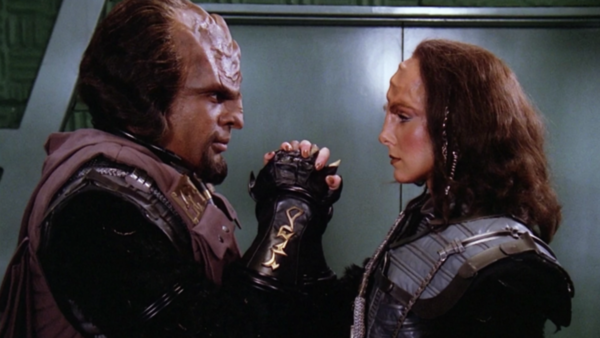
It's hard to imagine the Star Trek universe without Klingons. They are warriors who are driven by personal honor and loyalty to the Empire. They're also passionate artists and creators, making some of the galaxy's most revered poetry and unlistenable operas. But their relationship with the Federation as been one of their most defining qualities.
After a botched First Contact meeting, the Klingons and the Federation ended up as enemies for many years. This enmity played out through The Original Series as well as the prequel series, Enterprise. By the time The Next Generation rolled around, there was a tenuous peace between the Klingons and the Federation, leading to the first Klingon ever to serve in Starfleet.
Worf was the window through which fans grew to learn more about Klingons as a culture. They moved from being one dimensional space warriors to being a species with depth. Episodes focusing on Klingon politics and culture continued throughout TNG, Deep Space Nine and even into Voyager, to an extent. Discovery, a series set in a different reality, has a much different but no less interesting depiction of Klingons
Still, there are certainly some Klingon episodes that stand out above the rest.
10. Enterprise - Affliction & Divergence
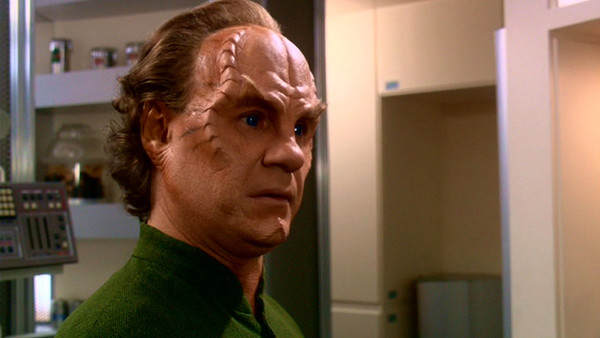
While Enterprise does have its fans, it's certainly not a favorite for many Star Trek watchers. It retconned a few things that the Star Trek elite had taken as gospel for a long time. You have to be careful if you're gonna change the facts Trekkers hold dear. But retconning can also be a power that's used for good. Take Klingon forehead ridges as a case in point.
In The Original Series, Klingons had flat, ridgeless foreheads. By the time the movies started, they definitely had ridges and that look persisted for the next few series. But Enterprise was set before TOS and Klingons had ridges. In the two part story that played out across "Affliction" and "Divergence," the reasons for this change were explained as a virus that impacted many Klingons, removing their ridges.
The virus was stopped with the assistance of Doctor Phlox, preventing it from impacting all Klingons. Over the generations, the impact of the virus lessened and eventually disappeared entirely.
It was the best possible explanation for a change in the story that worked across all series. These aren't necessarily the best episodes of any Star Trek series that you're going to watch but they did tie up a huge plot hole that had been plaguing the Star Trek universe for years, one fans wanted an answer to.
Ian Goodwillie is a freelance writer based out of Saskatoon, SK, Canada. He has a BA in English Literature from the University of Saskatchewan and completed the Writing Program at Vancouver Film School. More importantly, Ian is also a wrestling fan, comic book reader, video game player and photographer. He loves to write and writes about what he loves. Ian's also an unrepentant, unapologetic Cougar Town fan, a show he will defend until the day he dies.
- The A.V. Club
- The Takeout
- The Inventory
Everything You Need to Know About the Klingons, Star Trek 's Ever-Changing Space Warriors
Klingons are one of the most iconic Star Trek alien races. In 51 years they’ve evolved from deceptive villains to honorable allies—and now, with the arrival of Star Trek: Discovery this week, they’re becoming spiritual warriors once again, at odds with our heroes. Here’s everything you need to know about the past, present, and future of Qo’noS’s finest.

From Enemy, to Ally, to Enemy
Klingons have been one of the most persistent elements of Star Trek . They made their debut on the very first season of the original show, and have since appeared on every spinoff series, including Discovery —and in most of the Trek movies, as well.
The Klingons first met by Kirk and his crew in “Errand of Mercy” back in 1967 were very different from the Klingons we know today, both in their physical appearance and in their characterization. Intended as a Soviet parallel to the Federation’s US, the original Klingons were treated as inferior to the Federation’s ideals in every manner. The Klingons were a crafty, savage, and warmongering race, morally corrupt and willing to do anything to get their way—especially if it meant getting the upper hand against the Federation, their long-time rivals in an interstellar cold war.
That nature uncomfortably played into their appearance as well. The original Klingons were given an incredibly Orientalist aesthetic, with white actors having their faces darkened with makeup to appear more alien, plus accented eyebrows highlighted with shoe polish and matching thin mustaches. To the modern eye, the look of original Klingons is deeply problematic, but at the time, it was a huge budget saver; one of the primary reasons the Klingons became such major recurring villains in the original series was that their makeup costs were much lower compared to the prosthetics needed for the Romulans.
After the Star Trek TV series came to an end, then found itself revived as a movie series in the ‘70s, there was finally a budget to make the Klingons appear truly alien—and with it came a complete overhaul of the race that changed their place in the franchise. Their new makeup work gave the Klingons long, flowing hair, sharpened teeth, and distinctive forehead ridges (more on those later), but Klingon culture was given an even greater shake-up. A new language was introduced to further emphasize the differences between the Klingon Empire and the Federation, and, taking inspiration from feudal Japan, Klingons became a species that valued honor above all else, holding strictly defined traditions around the art of war that formed the cornerstones of Klingon society.
Although original Trek creator Gene Roddenberry was hesitant to bring back old aliens when Star Trek returned to TV with The Next Generation , set a century after the original show, the Klingons ultimately became a fundamental part of the series in the form of Michael Dorn’s Worf, a Klingon member of Starfleet and one of the show’s primary characters. Representing a time period when the relationship between the Federation and the Klingon Empire had become relatively amicable, Worf became a lens for the audience to discover the new culture behind the Klingons first hinted at in the movies, examining both their dedication to martial prowess (with the introduction of iconic elements like the Bat’leth, the curved Klingon blade) and their spiritual side. Gone were the savages of the original series, instead replaced by a principled society of honorable warriors.
By the time of Voyager and Deep Space Nine (the furthest we’ve been into Star Trek ’s timeline on TV) the Klingons had become heroes. After a brief period of hostility the Klingons became crucial allies for the crew of Deep Space Nine and the Federation at large in DS9 's seasons-long war with the Dominion, while Voyager examined prejudices and acceptance of the Klingons within Starfleet through B’Elanna Torres, a half-human, half-Klingon engineer troubled by the pull between her two very different cultures.
Discovery , set a decade before the original show, mixes up the Star Trek timeline a bit. The Klingons are the primary antagonists of the series, with the Federation openly at war with them. However, the show portrays the Klingons as fans have come to know them: as an honorable warrior race —right down to the forehead ridges. Speaking of which...
The Fall and Rise of the Klingon Forehead
How the Klingons grew from the mustachioed, smooth-headed humanoids of the original series to the ridged aliens of The Original Motion Picture and beyond has been a canonical puzzle Star Trek fans have theorized and debate about for decades. There was never a reason provided for the difference in either the movies or The Next Generation —it was simply declared that these new aliens were still Klingons and that was that.
For years, the closest the series ever got to acknowledging the change was a one-off joke in the special Deep Space Nine anniversary episode “Trials and Tribble-ations,” which saw the crew sent back into the past to the events of the original series episode “The Trouble with Tribbles.” When asked by his colleagues why the Klingons of Kirk’s time looked so different to the Klingons they know of in the 24th century, Worf offers a brief but stern rebuttal: Klingons don’t talk about it with non-Klingons.
Fans finally got an explanation for the disparity between the two kinds of Klingons nearly 40 years after their first appearance thanks to Star Trek: Enterprise , which was set in the years before the formation of the Federation. A two-part story in the show’s fourth season revealed that Klingons have actually always had forehead ridges, but a virus accidentally unleashed on the Klingon homeworld when scientists tried to augment Klingons with human DNA caused victims to develop human physical characteristics, including smooth foreheads. A treatment for the virus was developed by Enterprise ’s resident medic, Dr. Phlox, but the physician theorized that it would take generations for Klingon children to be born with ridged foreheads again.
It remains to be seen whether Discovery , which features pre-original series Klingons with forehead ridges, will have something to say about the bizarre evolution of the feature, given its place in Star Trek ’s timeline. But we do know that the series will provide a biological reason for the ridges : they’re covered in extra-sensory receptors, to help Klingons detect and hunt their prey.
The Long Road to Sto’Vo’Kor
Although Klingons have been established as a warrior race from the beginning (honorable or otherwise), one major element of Klingon culture introduced in their post-original Trek appearances is an emphasis on spirituality, borrowing elements from familiar mythological cultures in our own past to turn the Klingons into quasi-warrior monks. The honor-bound nature of the Klingons has led to many instances of their culture clashing with that of the Federation through a love of rituals and remembrances, especially around the act of honoring the dead.
In the Klingon belief system, the body after death is an empty shell. The soul of a fallen Klingon goes to one of two places. If they lived an honorable life and fell in battle, they go to Sto’Vo’Kor, which is pretty much Klingon Valhalla, a heavenly plane of battles and feasting. If they were dishonored or didn’t die fighting, they go to Grethor, a fiery hellscape where their souls suffer for eternity—after the prerequisite journey on a barge through a river of death to Grethor’s gates, of course. Relatives of the deceased can perform honorable acts in their own lives to ensure their fallen relative’s soul goes to Sto’Vo’kor if they didn’t die in battle—which, in some cases, can include offering their own soul for torture in Grethor in their place, as B’Elanna attempted to do for her mother in the Voyager episode “ Barge of the Dead .”
Aside from their ritualized beliefs and honor codes, Klingon spirituality includes no gods, as legendary warriors killed them thousands of years ago. There is one important figure in Klingon religion, though: Kahless, who was the first ruler of the Klingon Empire and established its honor code. Weirdly enough, by the time of The Next Generation and beyond, the Empire was once again led by Kahless... except this time it was a lab-grown clone of the original, a slightly less intimidating figure and more of a figurehead for Klingon society than an actual ruler.
Talking Klingon
As Star Trek ’s portrayal of Klingon culture developed, so did the need to make the race feel alien beyond the makeup-drenched actors of the original show—and part of that was the development of a whole new language for Klingons to speak in. Originally devised by Scotty himself, James Doohan, and Motion Picture producer Jon Povill as part of the film’s wide-scale re-imagining of the Klingons, the Klingon language (sometimes referred to as Klingonese) as we know it today was really developed during the making of The Search for Spock by Dr. Marc Okrand.
Okrand expanded the handful of words created during The Motion Picture into a fully constructed language, and in 1985, he published The Klingon Dictionary. Originally intended as source material for writers and actors, the dictionary expanded on Klingon grammar, such as its unconventional object-verb-subject form. It also gave Klingon phrases for everything as menial as “Happy Birthday” (qoSlIj DatIvjaj) to insulting someone’s mother with the smoothness of their forehead (Hab SoSlI’ Quch!)
Okrand’s work on the Klingon language flourished, not just because of his own additions to it as Star Trek continued, but through the works of fans. Shortly after The Klingon Dictionary ’s release, fans started to learn and teach the rules Okrand had laid down, and groups like t he Klingon Language Institute started forming in the early ‘90s to study the entirely fictional language. In the years since, translations of famous texts have been made available in Klingon—from Bible passages, to the epic Gilgamesh , to Shakespearian plays (inspired by the line from Star Trek VI: The Undiscovered Country , “ You have not experienced Shakespeare until you have read him in the original Klingon ”), as well as an entire opera performed in the language , ‘u’ , all done by ardent fans.
Klingons are one of Star Trek ’s most enduring features—their reliable presence across 51 years of the franchise is as defining as their ability to change each time we meet them. Whether it’s in big ways or small, change is fundamental to the Klingons, from the mustachioed brutes of the original series, to the dominating, brutal, and alarmingly spiky armored hunters we’re about to meet in Star Trek: Discovery . No matter how many times they show up, it’s always guaranteed that there’s always going to be something new to learn about them.
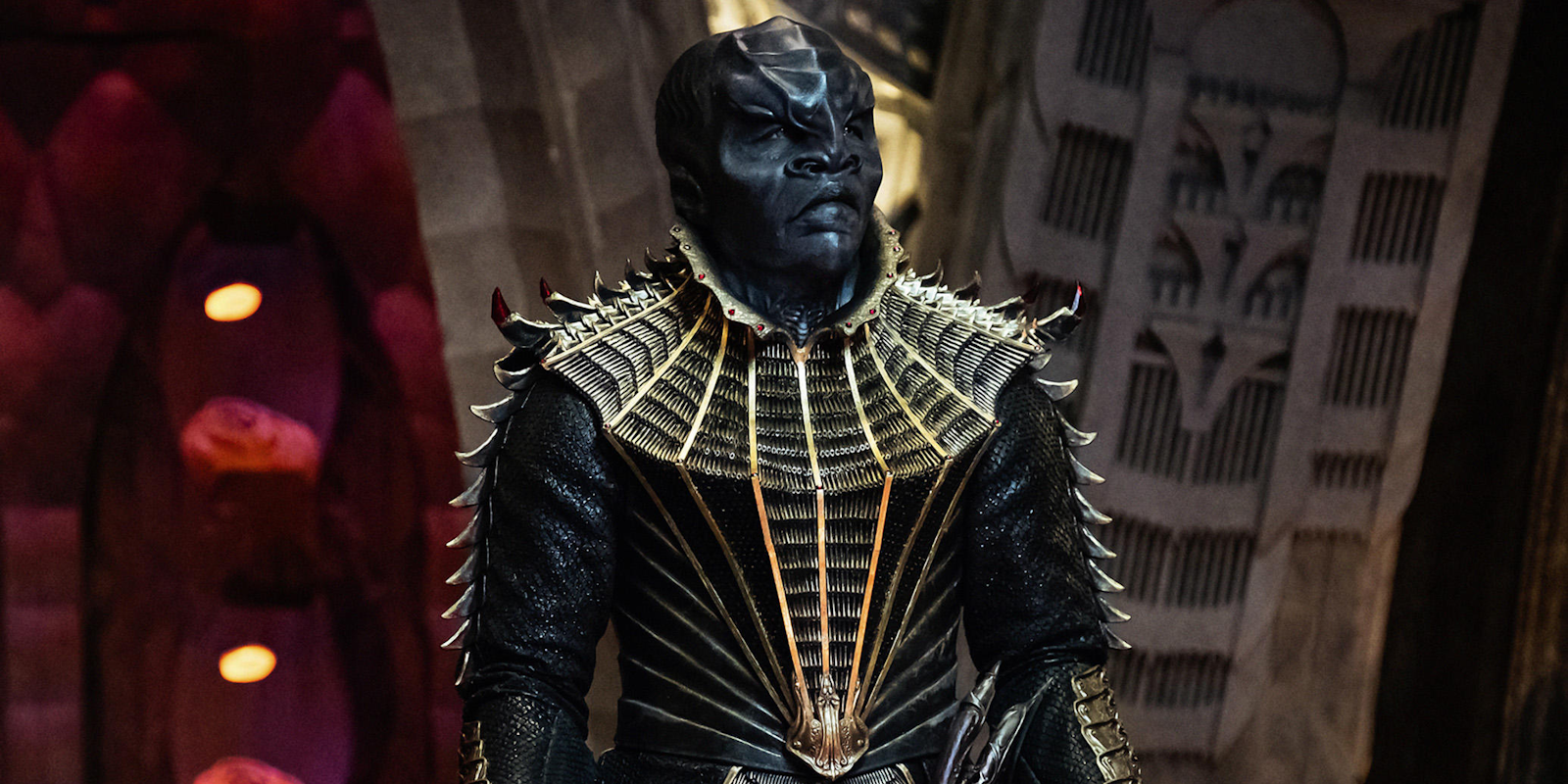
Photo via Star Trek: Discovery/CBS
9 Klingon episodes to watch on Netflix before ‘Star Trek: Discovery’
These episodes will teach you about klingon culture, spanning the best moments of the 'star trek' franchise..

Gavia Baker-Whitelaw
Posted on Aug 20, 2017 Updated on May 22, 2021, 8:01 pm CDT
Even if you’ve never watched Star Trek , you’ve probably heard of Klingons . These warlike aliens began as the mortal enemies of Captain Kirk and his crew, later forming an alliance with the Federation in .
The Klingons have a patchy history, ranging from epic Shakespearean drama to some rather clumsy writing, and occasional racist undertones. Star Trek: Discovery will be the first show to include a whole crew of Klingons in the main cast, exploring the political backstory of their war with the Federation.
So, now is the perfect time to check out some of Star Trek’s best Klingon episodes. They’re all on Netflix !
The best Klingon episodes of Star Trek
“errand of mercy,” star trek: the original series.
The Klingons make their first onscreen appearance in this season 1 episode, where Kirk and Spock beam down to the suspiciously peaceful planet Organia. Kirk wants to protect Organia from Klingon attack, but the locals refuse any outside help. Kirk and Spock end up stranded on the planet while Klingon forces invade, led by the cunning officer Kor.
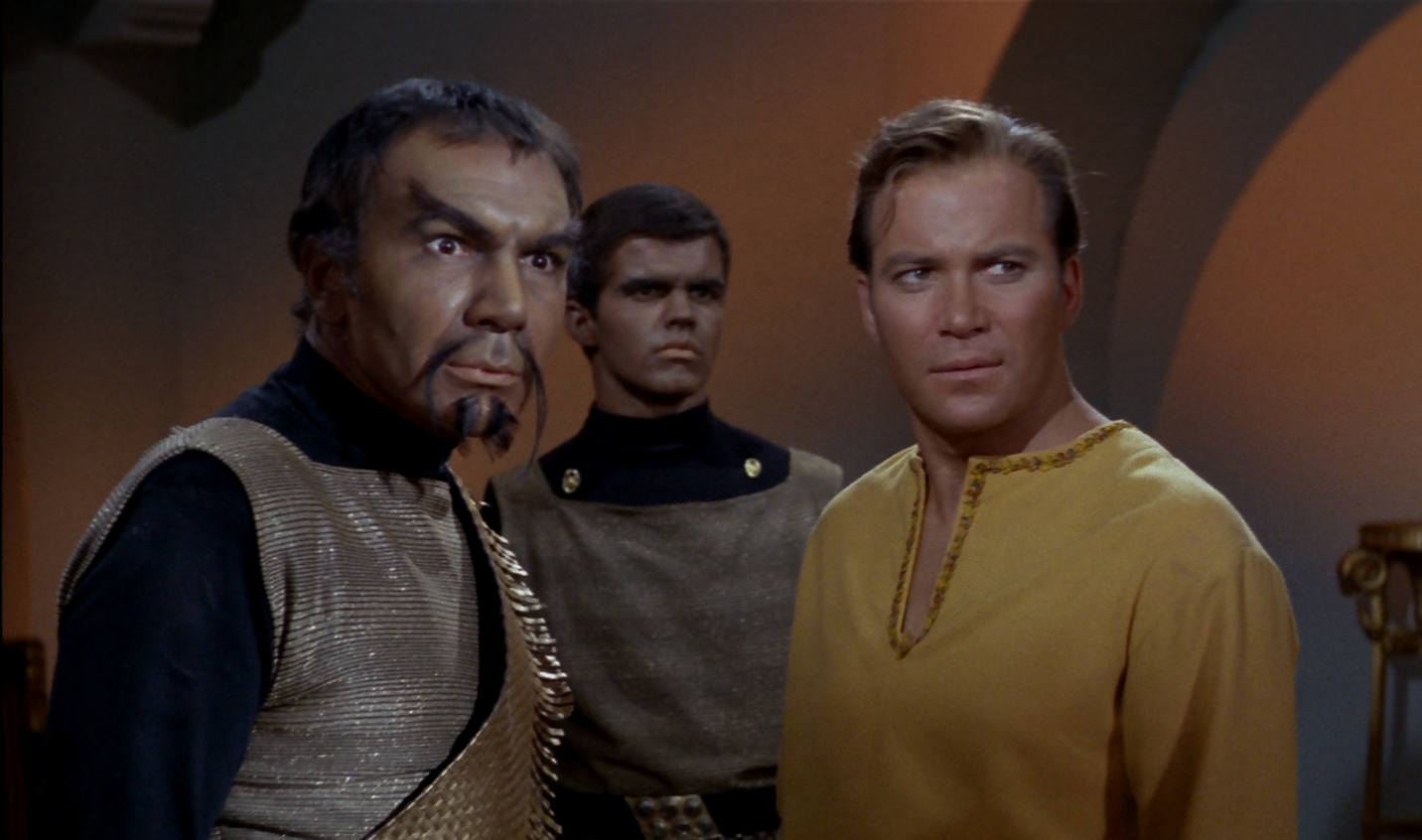
“Errand of Mercy” is a formative and forward-thinking war story, depicting Kirk and his enemy as likeminded military leaders. Tying in with the Cold War themes of 1960s Trek, it foreshadows a future alliance between the Klingons and Federation, correctly predicting that it could only happen after decades of conflict.
Discovery takes place 10 years before the Original Series, so this is a great place to begin. It’s also a helpful reminder that the Klingons have changed a lot throughout the franchise. The original Klingons basically looked like humans, and Kor is more cerebral than the bloodwine-quaffing barbarian fighters of The Next Generation .
Star Trek VI: The Undiscovered Country
Star Trek III and V both involve Klingons, but the sixth movie is the most significant. It’s the last appearance of the Original Series crew, now in their 50s and 60s. As the Klingons and Federation try to broker an alliance, Kirk’s crew must defeat a conspiracy designed to ruin the peace talks.
Released in 1991, The Undiscovered Country is a thoughtful conclusion to Star Trek ‘s Cold War politics. It’s also one of the best Star Trek movies, with sensitive characterization for the aging heroes during a time of great upheaval.
“Heart of Glory,” Star Trek: The Next Generation
Worf is the most prominent Klingon in Star Trek , introduced in TNG as the first Klingon officer in Starfleet. Raised by human parents, he occupies a similar role to Spock, whose half-human heritage made him an outsider to both humans and Vulcans.
Many Worf episodes are about him searching for his cultural identity, caught between his Klingon warrior philosophy and his loyalty to Starfleet. “Heart of Glory” takes place in TNG ‘s rather clunky first season, so it’s a little slow-moving. However, it provides important insight into Worf’s backstory, as he’s confronted by two traditional-minded Klingons during a rescue mission. It illustrates how Klingons struggle to find a sense of honor during peacetime, a fundamentally alien idea to Captain Picard’s diplomatic mindset.
“Sins of the Father,” Star Trek: The Next Generation
When the Enterprise hosts an officer from the Klingon fleet, the crew faces an instant culture-clash. Worf is sensitive to other Klingons perceiving him as weak or “too human,” but the situation quickly moves beyond mere social awkwardness. The Klingon officer informs Worf that his dead father is accused of betraying the Empire, drawing Worf into a court case to defend his honor.
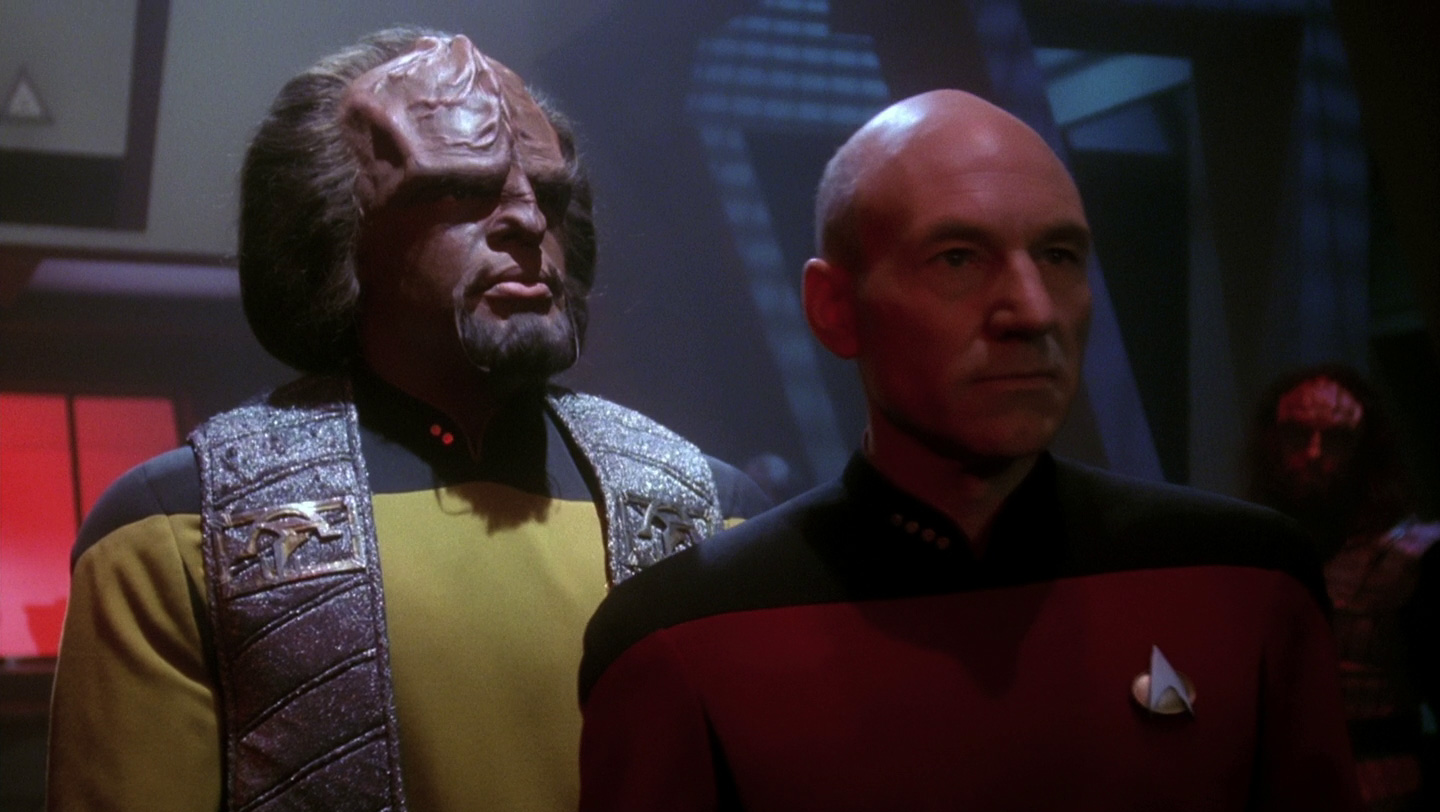
Worf’s backstory involves a historic moment in Klingon/Federation relations. His parents died in the Khitomer Massacre, where Federation ships saved Klingon civilians from a Romulan attack, leading the Klingons to respect the Federation as potential allies. By accusing Worf’s father of betraying the Empire at Khitomer, this episode forces Worf to confront the dark side of Klingon politics, and his role as an outsider.
(For more about Khitomer, I recommend the fantastic alternate-universe episode “Yesterday’s Enterprise,” taking place in a timeline where the Klingon war never ended.)
“The Emissary”/”Reunion,” Star Trek: The Next Generation
These two episodes star Worf’s love-interest, a half-Klingon named K’Ehleyr. She’s a Federation ambassador, and both stories concern diplomatic relations with the Klingon Empire. “The Emissary” involves a lost Klingon ship whose crew believe they’re still at war with the Federation. Then “Reunion” introduces some key figures who dominate Klingon politics throughout TNG and Deep Space 9 . Picard has to investigate the assassination of a Klingon leader, tying into the impact of Worf’s court case in “Sins of the Father.”
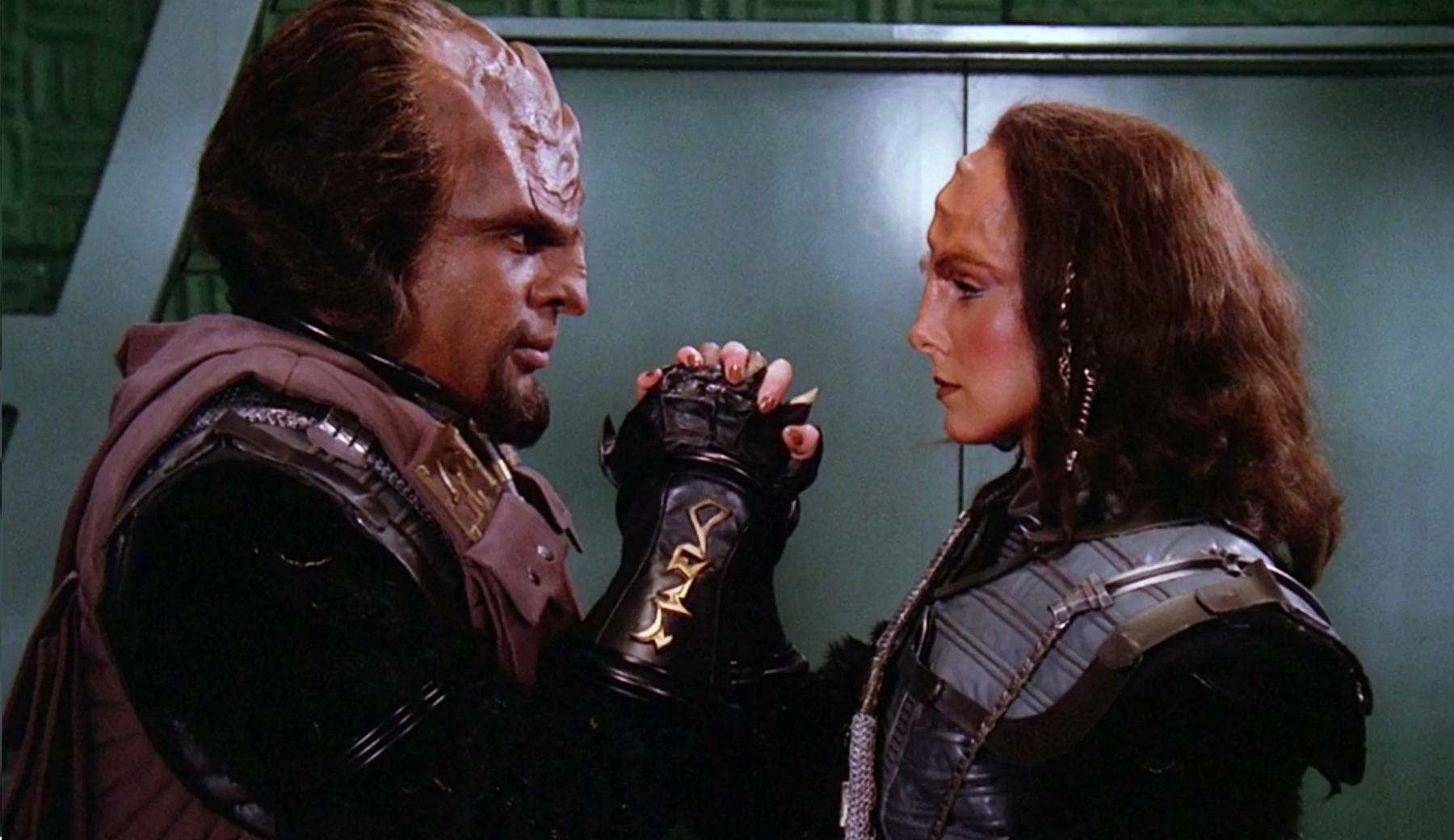
Since most Klingon episodes involve Worf, we see a lot from his perspective as an outsider—and as a man. K’Ehleyr allows the show to explore his awkward attitude to women and romance, positioning her as a more progressive and laid-back character. Think CJ Cregg from The West Wing , but with a Klingon temper.
“The Way of the Warrior,” Star Trek: Deep Space 9
Worf moves to Deep Space 9 in season 4, joining the crew of a space station in the midst of an interplanetary conflict. This marks a turning point for the show, launching into epic power struggles between the Federation, Klingons, Cardassians, and other alien factions. In “The Way of the Warrior,” the Klingon fleet attacks the nearby Cardassian homeworld, kicking off a long-running war story with several key Klingon characters. A good choice if you enjoy space battles!
“The Sword of Kahless,” Star Trek: Deep Space 9
Klingon war hero Kor (played by the same actor as Kor in the Original Series) invites Worf and another DS9 officer, Jadzia Dax, to hunt for a long-lost Klingon artifact. With hints of Indiana Jones, this is a fun standalone adventure with roots in Klingon mythology. It’s also a great episode for Dax, an alien who retains memories of her past lives, and is personally familiar with Kor and many Klingon traditions.
“Barge of the Dead,” Star Trek: Voyager
Like Worf, Spock, and several alien characters in DS9 , Voyager’ s Klingon crew member is caught between two worlds. B’Elanna Torres is a half-Klingon Starfleet engineer who began as a Maquis freedom fighter, and she dislikes her Klingon heritage. In “Barge of the Dead,” she has a vision of her mother in the Klingon afterlife, cursed because B’Elanna has rejected her Klingon identity.
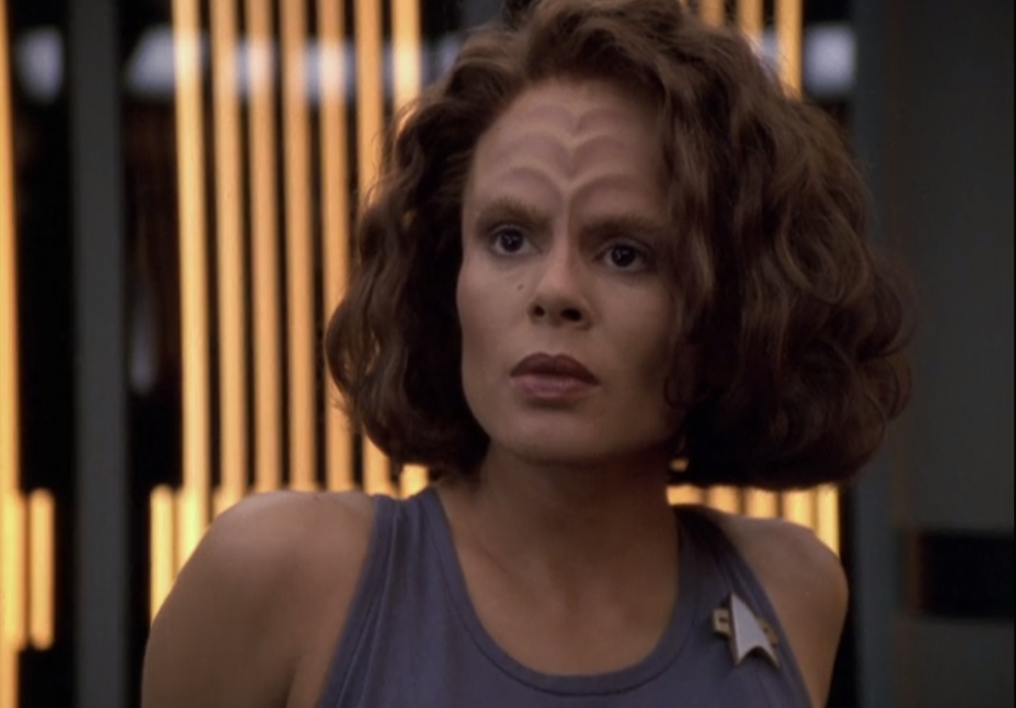
Voyager isn’t generally praised for its writing, but this episode came from an exciting creative partnership: Battlestar Galactica mastermind Ronald D. Moore and Voyager/DS9 staff writer Bryan Fuller , who went on to create Star Trek: Discovery . As a mythology-infused psychological drama about death and identity, you can see hints of Fuller’s later work on Hannibal and American Gods . It’s also a refreshing change from all those Worf episodes, because it’s all about women.
“Once More unto the Breach,” Star Trek: Deep Space 9
DS9 ‘s later seasons see a marked improvement in writing, acting, and production values for the franchise, developing into a wartime epic with complex character arcs and a serialized plot.
“Once More unto the Breach” takes place in season 7, and includes a spoiler for a major character death. Otherwise, it can work as a standalone episode. Written by Ronald D. Moore, it marks the return of the aging Klingon hero Kor. Despite his legacy, Kor has been refused command of a ship in the Klingon fleet, and Worf tries to find out why.
At this point, Star Trek ‘s writers had a much more thoughtful attitude to Klingon politics, exploring the class system behind their warrior culture. After all, not every Klingon can be a soldier or the heir to an aristocratic house. If you’re OK with spoilers, you can also try the Klingon wedding episode “You Are Cordially Invited.” And, for that matter, all of DS9 ‘s last four seasons.
Gavia Baker-Whitelaw is a staff writer at the Daily Dot, covering geek culture and fandom. Specializing in sci-fi movies and superheroes, she also appears as a film and TV critic on BBC radio. Elsewhere, she co-hosts the pop culture podcast Overinvested. Follow her on Twitter: @Hello_Tailor

Featured Local Savings
Star Trek (TV Series)
Errand of mercy (1967).
- User Reviews
Awards | FAQ | User Ratings | External Reviews | Metacritic Reviews
- User Ratings
- External Reviews
- Metacritic Reviews
- Full Cast and Crew
- Release Dates
- Official Sites
- Company Credits
- Filming & Production
- Technical Specs
- Plot Summary
- Plot Keywords
- Parents Guide
Did You Know?
- Crazy Credits
- Alternate Versions
- Connections
- Soundtracks
Photo & Video
- Photo Gallery
- Trailers and Videos
Related Items
- External Sites
Related lists from IMDb users

Recently Viewed

Giant Freakin Robot
Star Trek's Most Controversial Series Could Be Perfect With One Change
Posted: March 25, 2024 | Last updated: March 25, 2024
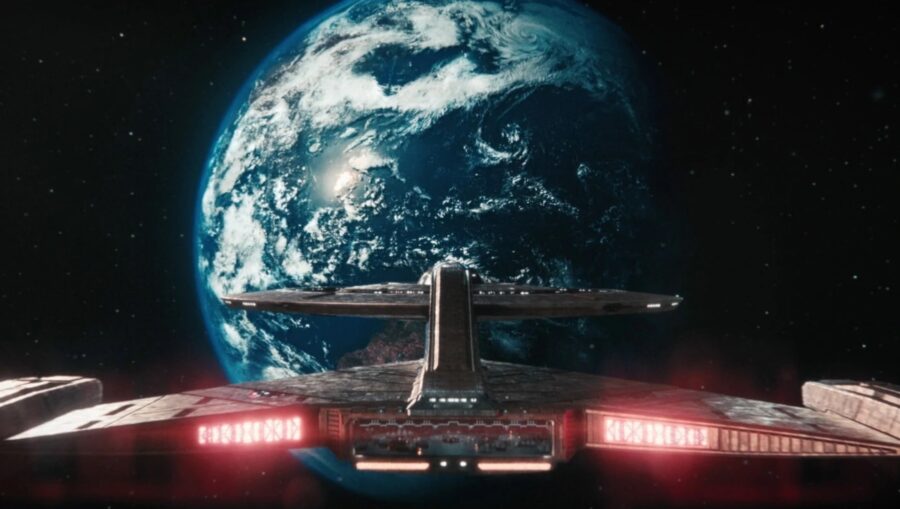
Star Trek’s Most Controversial Series Could Be Perfect With One Change
When Star Trek: Discovery first came out, there was plenty of fan fascination toward Voq, the albino Klingon cultist who served as a Torchbearer who lit the Beacon of Kahless. Later, we get a frankly disappointing plot where Voq’s body is transformed and merged with a human mind so he can be a kind of Klingon double agent. This was an early Discovery disappointment, and now that the series is about to end, I need to get this off my chest: the show would have been infinitely better if Voq was later revealed to be “The Albino” from Deep Space Nine.
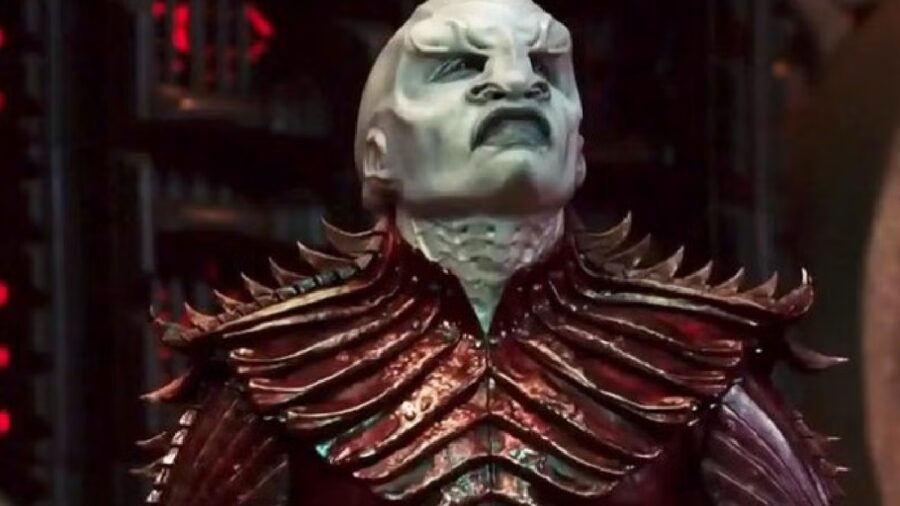
The Potential Of Voq
Before we can get to how this Voq should have been connected to the best Star Trek series (yeah, I said it), let’s review some of what we know about this albino Klingon. Due to his unique skin coloration, Voq was an outcast in Klingon society, and he ended up joining a kind of cult centered around T’Kuvma, a Klingon who hated the Federation and wanted to unite the Klingon Empire against them. Because he was an albino, Voq was still an outcast among T’Kuvma’s Klingons, but his unwavering loyalty and faith convinced T’Kuvma to make the strange Klingon the Torchbearer, a role that had great cultural significance.
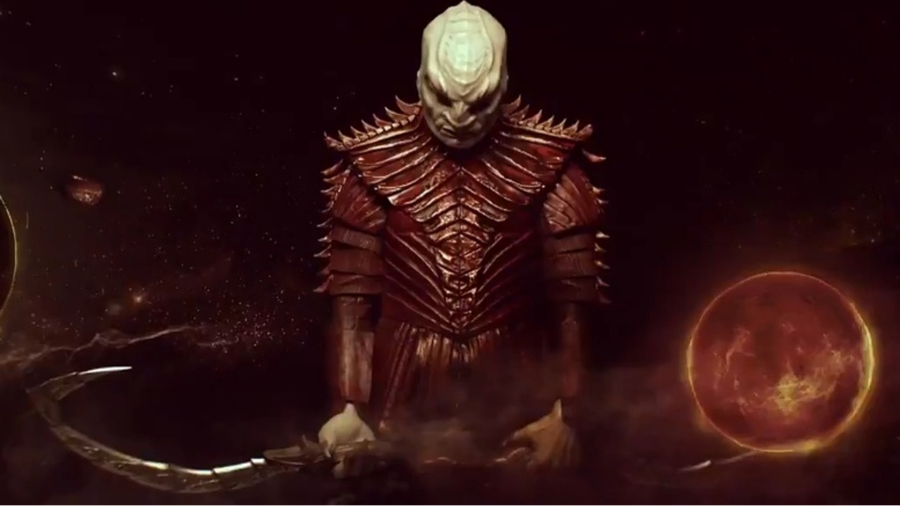
The Interest Didn’t Last Long
Unfortunately, this was the last time Voq was really interesting. In short order, T’Kuvma kills Captain Georgiou, and Michael Burnham kills the Klingon cultist in retaliation. T’Kuvma and Voq realize their goal of uniting the Klingons against the Federation by kicking off a very costly war between these interstellar groups, but the albino Voq gets left behind while other Klingons seek glory in combat. It’s only with the help of fellow cultist L’Rell that he finds safety with the House of Mo’Kai, and when we next see Voq, he is surgically altered and has the face and mind of a human Starfleet officer.
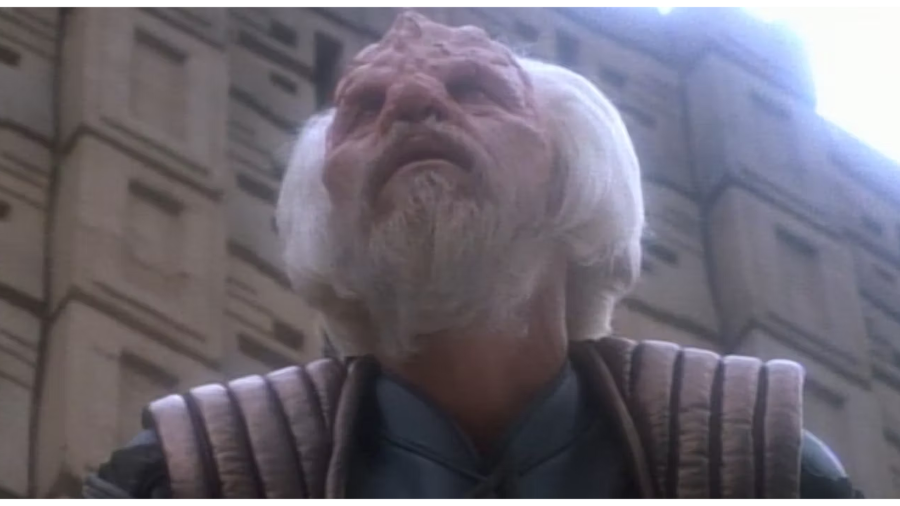
To this day, the whole “Voq the double agent” thing remains one of the stupider Star Trek: Discovery storylines. Back before the reveal that “Ash Tyler” was just a disguised and very confused Voq, there was plenty of fan speculation online about whether we had actually seen this unique Klingon once before. Now that the Discovery final season is nearly upon us, I’m here to tell you the show would have been much cooler if Voq was revealed to be The Albino, a character introduced in the Deep Space Nine episode “Blood Oath.”

For The Sake Of Argument
Now, before anyone starts swinging their replica Bat’leths at me, I’m aware that the episode never firmly states that The Albino is a Klingon. However, not only does he look very much like a Klingon in appearance, but he knows enough about Klingons and Klingon culture to get revenge on some of the savviest warriors in the history of the Empire. Between these details and the simple fact that I’m just waxing nostalgic about what could have been (oh, and StarTrek.com actually saying he’s a Klingon), this argument assumes that The Albino is, in fact, a very unconventional Klingon warrior.

The Warriors Three
In “Blood Oath,” we learn that The Albino is a criminal whose powerful organization was overthrown by three famous Klingons from The Original Series: Kor, Koloth, and Kang. These warriors weren’t able to capture The Albino himself, so the criminal vows vengeance on them. Years later, he delivers on this grim promise by using a genetic virus to ensure that the firstborn sons of his enemies all die.
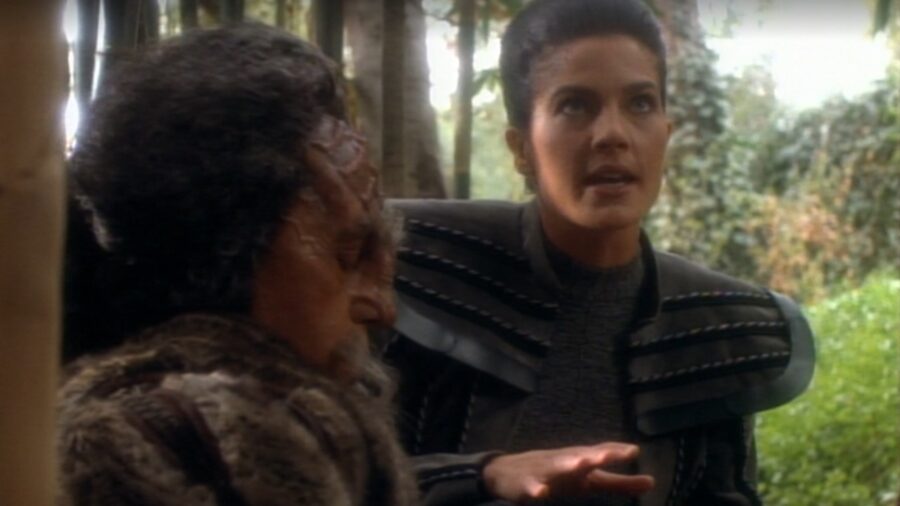
This resulted in the titular blood oath of vengeance, but it seemed like these Klingons might never find and kill their old foe. However, the plot of “Blood Oath” involves The Albino suddenly issuing a challenge to these Klingons to come to his compound and fight his best warriors before facing The Albino himself. The Klingons accept the challenge and ultimately defeat their foe with the help of Jadzia Dax, whose previous host, Curzon Dax, had been very tight with this trio of warriors.
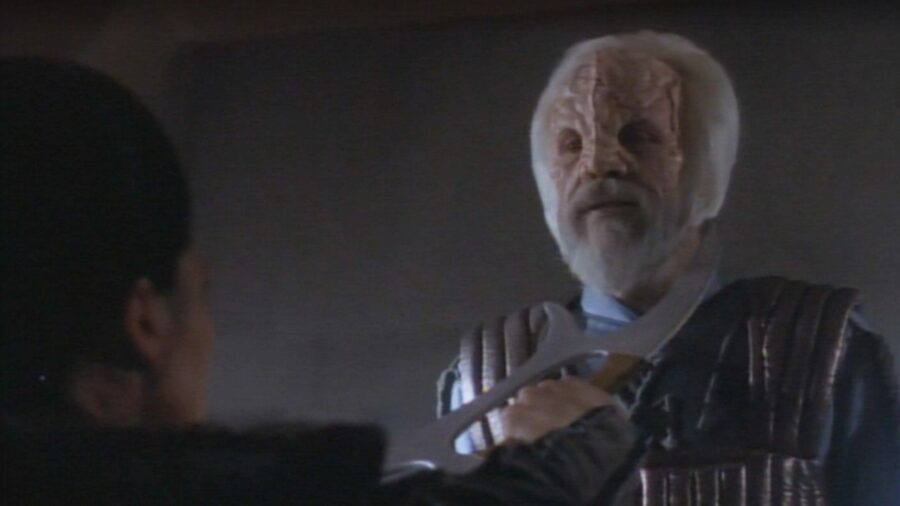
Dig Two Graves
In case you’re wondering, the blood oath was fulfilled: Kang killed The Albino, but he and Koloth were mortally wounded after these brave Klingons stormed the villain’s compound. It’s almost a perfect Deep Space Nine episode, and one of the only things that could have made it better is a belated revelation that Voq was, in fact, The Albino. Obviously, they have matching skin color, but that’s not the only reason that such a fun plot twist would make perfect sense.

Some fans, for example, think The Albino couldn’t be a Klingon because he built himself a criminal empire…basically, the opposite of what an honorable warrior would do. But if Discovery had ditched the Ash Tyler storyline, it would have made sense for Voq, rejected by Klingons his entire life, to begin rejecting Klingon culture altogether and strike out on his own. It would have made even more sense that he, as “The Albino,” would have very intense anger towards the Klingons that defeated him.
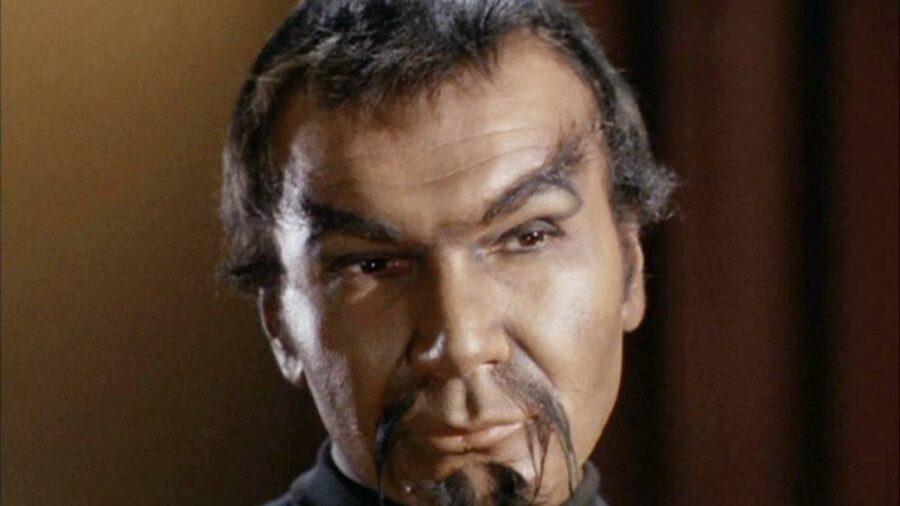
Voq’s Hatred
In “Blood Oath,” it’s implied that The Albino simply wanted vengeance on the Klingons that brought his criminal empire tumbling down, but it would make more sense for the Voq from early on in Star Trek: Discovery to hate these guys with a passion. For one thing, they are a symbolic representation of the powerful Klingons who basically left Voq to rot after the death of T’Kuvma. For another thing, one of these Klingons, Kor, was present in “Errand of Mercy” when the Organians prevent a second war between Klingons and the Federation; it’s entirely possible Voq, a follower of T’Kuvma, would have taken such a failure very seriously.
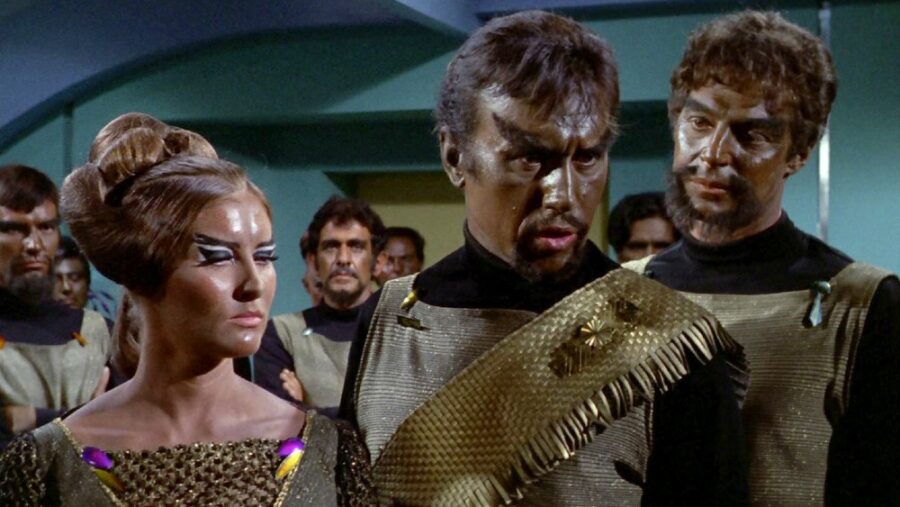
The Evolution Of The Klingons
Ironically enough, if Voq really had been The Albino, he might have hated these Klingons based on their appearance. While they were later surgically restored to the Klingon look established in The Motion Picture, these Klingon warriors were introduced in The Original Series looking more or less like humans. A later Enterprise episode awkwardly explained why the Klingon look changed, but the important thing is that Voq was a follower of T’Kuvma, someone who wanted all Klingons to join under the “one creed” that was exactly two words: “remain Klingon.”
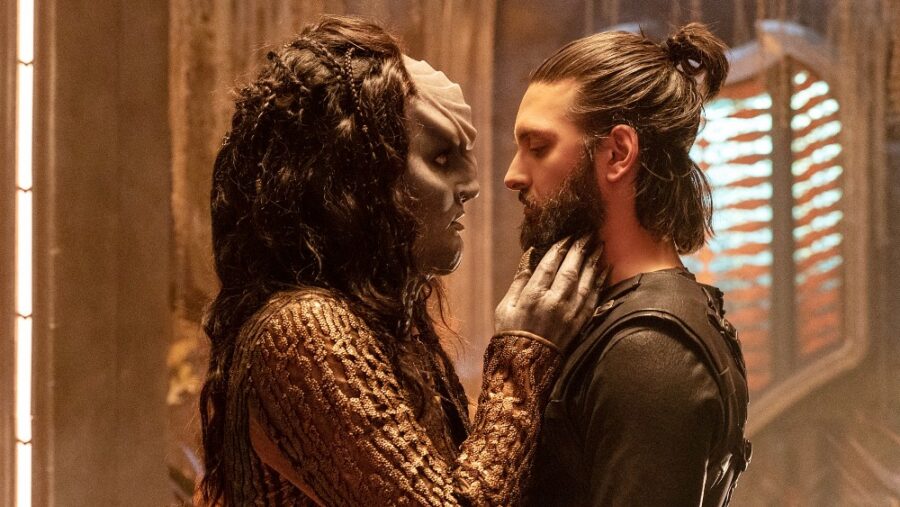
Voq Should Have Been A Highlight
If Voq later became a criminal who was defeated by Klingons who looked like the hated humans of the Federation, he might have a special hatred for warriors who had failed to remain Klingon (or at least, Klingon-looking).
If nothing else, it would have been cool for NuTrek flagship show Star Trek: Discovery to tie back to Deep Space Nine in such a cool and tangible way. Sadly, though, that didn’t happen, and we were left with the weird and disappointing Ash Tyler story. To this day, fans debate whether it was Voq’s mind or Ash’s mind in control, but I’m still mulling a more pressing question: what the heck happened to the mind of the Star Trek writer who thought this Ash Tyler storyline would be a good idea in the first place?
More for You
Putin's £80,000,000 spy ship taken out by massive missile strike
The 11 Rudest Things You Can Do In Someone Else’s House, According To Etiquette Experts
Blondie by Dean Young and John Marshall
From Tammy Baldwin to Lauren Boebert, Congress members just brought home the dough
17 McDonald's Menu Items From The 1980s You Probably Forgot About
Mathematician Who Made Sense of the Universe's Randomness Wins Math's Top Prize
Don’t Lie to the IRS — And 9 Other Things You Should Never Tell Them
Here Are 6 Things White People Say That Highlight Their Privilege And OMG I Hear These Allllll The Time
Why Timothee Chalamet And Denis Villeneuve Didn't Speak English While Filming Dune
Joe Rogan Shares Strong Stance on NYC's New Squatters Policy
This is a 'slap in the face' to Letitia James: Gregg Jarrett
The Best Potluck Desserts No One Thinks to Bring
Wife in America’s fourth-richest family bashes ‘small-minded community’ after she buys up real estate
3 lies women have been told about their bodies, according to a female doctor
New hope for sisters trapped in their bodies
4-day workweek: 61 companies made the switch, here's what happened
The Supreme Court Just Stepped Into Our Country’s Most Fundamental Minefield
Linda Bean, an entrepreneur, GOP activist and granddaughter of outdoor retailer LL Bean, has died
Rapper Sean 'Diddy' Combs' homes raided by Homeland Security
Can You Eat Potatoes with Sprouts?
Screen Rant
Star trek teases a dark fate for an original series god-like species.
As IDW's Star Trek title hits the mid-way point on its second year, it teases a dark fate for a powerful god-like species from the Original Series.
- The last Organian comes to Sisko for help in fixing a crisis in the Pleroma, or the Realm of the Gods.
- T’Lir reveals their true identity as an Organian, setting the stage for a big mission in the Pleroma
- Kahless's attack on the Organians may have personal roots due to their history of enforcing peace, and curbing Klingon aggression.
Warning: contains spoilers for Star Trek #18!
Star Trek has teased a dark fate for a god-like species from the Original Series. Captain Kirk and company met a number of god-like beings and races during the original Star Trek run, and these same entities have been on alert since Kahless declared war on them all. Now, in issue 18, the sole survivor of one of these races comes to Sisko with a desperate plea for help.
Star Trek #18 is written by Jackson Lanzing and Collin Kelly and drawn by Marcus To. After being chewed out by Starfleet for his actions on the Tzenkethi homeworld, Captain Sisko is paid a visit by T’Lir, his former science officer. T’Lir was reassigned shortly after the Klingon uprising, and they tell Sisko “the veil is starting to thin.” T’Lir explains that the Pleroma, the Realm of the Gods, is in serious trouble.
T’Lir then identifies themselves as the last of the Organians, and that they and Sisko must “help fix the wound at the center of all things.”
The Organians Have a Long History in the Star Trek Universe
They were responsible for enforcing peace on the federation and the klingons.
This revelation put to bed T’Lir’s secret identity. Since issue one, Lanzing and Kelly had been hinting there was more to T’Lir than met the eye, and they were a god-like being themselves. T’Lir has been absent from the book for several months, but has now returned to take Sisko on what might be their biggest mission yet– to the mysterious Pleroma , which has been teased in past issues. This “Realm of the Gods” is under siege from Kahless and his god-killer. Judging from T’Lir’s remarks, Kahless has already made short work of the Organians.
The last of my people. The only living thing left to call Organia home.-T'Lir
The Organians were one of the first such races encountered in the Star Trek universe. Introduced in the first season episode “An Errand of Mercy,” the Organians used their vast power to impose a peace treaty on both the Klingons and the Federation. Outwardly, the Organians resembled primitive humans, and seemed to lack any kind of technology, but this was just a ruse. The Organians made one more on-screen appearance, in the fourth season of Star Trek: Enterprise , in the episode “The Observer Effect.” They have been depicted as beings of great power, yet they have been reduced to one.
Kahless Had Good Reason to Attack the Organians
Kahless' crusade just became personal.
The Organians' past actions may explain why Kahless attacked them. Kahless declared war on the universe’s god-like beings in order to fulfill the mandate of his namesake, but the Organians may occupy a special place for him. After the Organian peace treaty, the Federation and the Klingons never went to war again, and indeed the treaty can be viewed as the end of Klingon aggression. Kahless preached a message of Klingon renewal, and his attack on Organia could have been personal. The ultra-powerful Organians are now an endangered species in the Star Trek universe.
Star Trek #18 is on sale now from IDW Publishing!

IMAGES
VIDEO
COMMENTS
Errand of Mercy: Directed by John Newland. With William Shatner, Leonard Nimoy, John Abbott, John Colicos. With a war with Klingons raging, Kirk and Spock attempt to resist an occupation of a planet with incomprehensibly placid natives.
"Errand of Mercy" is the twenty-sixth episode of the first season of the American science fiction television series Star Trek. Written by Gene L. Coon and directed by John Newland, it was first broadcast on March 23, 1967.It was the first episode in which the Klingons appeared.. In the episode, with a war with the Klingons declared, Captain Kirk and his First Officer, Mr. Spock, attempt to ...
The debut of the Klingons came in one of The Original Series' best episodes, and was a perfect introduction to the legendary alien race."Errand of Mercy" sees the Enterprise crew in a heated debate with the leaders of the planet Organia. Situated in a strategic corridor of space, the Organian leadership is unconcerned about an impending Klingon invasion.
Day of the Dove: Directed by Marvin J. Chomsky. With William Shatner, Leonard Nimoy, DeForest Kelley, Michael Ansara. Both humans and Klingons have been lured to a planet by a formless entity that feeds on hatred and has set about to fashion them into a permanent food supply for itself.
The Klingons first appeared in Star Trek: The Original Series season 1, episode 26, "Errand of Mercy".Actor John Collicos, who played Kor in the episode, was the first TOS Klingon, and is largely responsible for their look, and the depiction of them as conquerors.Collicos took inspiration from Genghis Khan, which made the Klingons a more universal foe than the communist analogs they were ...
Klingons were first introduced in Star Trek: The Original Series, in the season 1 episode "Errand of Mercy."The episode revolves around Captain Kirk and the crew of the USS Enterprise on a mission to the planet Organia in order to protect its inhabitants from a Klingon attack. However, it is eventually revealed that the Organians are actually quite advanced beings who don't need any protection ...
Design Conception Two Klingon men and a Klingon woman as they appear in the Star Trek: The Original Series episode "Day of the Dove".The bronzed skin, facial hair, lack of ridged foreheads, and simple costumes are typical of The Original Series.. The Klingons were created by screenwriter Gene L. Coon, and first appeared in the Star Trek episode "Errand of Mercy" (1967).
The Trouble with Tribbles: Directed by Joseph Pevney. With William Shatner, Leonard Nimoy, DeForest Kelley, William Schallert. To protect a space station with a vital grain shipment, Kirk must deal with Federation bureaucrats, a Klingon battle cruiser and a peddler who sells furry, purring, hungry little creatures as pets.
This episode was released in Japan on December 21, 1993 as part of the complete season 3 LaserDisc set, Star Trek: Original Series log.3. A trailer for this and the other episodes was also included, and the episode had English and Japanese audio tracks. The cover script was スター・トレック TVサードシーズン for the set.
Klingon patrol officers. By 2259 in the alternate reality, after Starfleet's first contact with the Empire, the Klingons had conquered and occupied two planets known to the Federation and fired on Starfleet ships half a dozen times. Tensions between the two powers were high and an all-out war was considered inevitable. During that year, before surrendering to the Federation, Khan Noonien Singh ...
Klingons are a technologically advanced warrior species that come from the planet Qo'noS in the Beta Quadrant. Best known for their fierceness and respect for honor, the Klingon Empire is one of the most formidable and powerful forces in the galaxy and carries a brutal reputation. This tendency toward aggression and violence is baked into ...
Their actions in the episode to stop the Federation-Klingon war were largely a bluff. Eventually they would enlist the Interstellar Concordium to impose order on all of the local races. However, TOS comics set between Star Trek II: The Wrath of Khan and Star Trek III: The Search for Spock contradict this. The comics claim that the Organians ...
For the aborted Star Trek television series Phase II, John Meredyth Lucas wrote a two-part episode "Kitumba" that would have radically changed Klingon culture and society. Lucas, who had produced half of the second season of The Original Series , borrowed from Japan give the Klingons a god-like ceremonial head of state, called the Kitumba ...
Are the Klingons the greatest of Star Trek's races?Read the article here: https://whatculture.com/tv/star-trek-10-best-klingon-episodesGet Surfshark VPN at h...
Still, there are certainly some Klingon episodes that stand out above the rest. 10. Enterprise - Affliction & Divergence. While Enterprise does have its fans, it's certainly not a favorite for ...
As Star Trek's portrayal of Klingon culture developed, so did the need to make the race feel alien beyond the makeup-drenched actors of the original show—and part of that was the development ...
A 'Worf episode' isn't automatically a 'Klingon episode' for example, but there's a large overlap for obvious reasons. Enjoy! Enterprise. Broken Bow, Part 1 & 2 (S01E01 & S01E02) ... Star Trek: Generations (Note: Klingons are B plot, but still there) DS9. Blood Oath (S02E19)
The Trek Klingon stories are some of my favorites, and Day of the Dove isn't too shabby. It is an anti-violence, pacifistic story concerning this multicolored blob of light (imagine a spinning small cloud that goes red when violence and hatred are at their peak) which wails as tempers, racial tensions, and warlike desires rise and rage ...
The best Klingon episodes of Star Trek "Errand of Mercy," Star Trek: The Original Series. The Klingons make their first onscreen appearance in this season 1 episode, where Kirk and Spock beam ...
The series originally aired from September 1966 through June 1969 on NBC. [1] This is the first television series in the Star Trek franchise, and comprises 79 regular episodes over the series' three seasons, along with the series' original pilot episode, "The Cage". The episodes are listed in order by original air date, [2] which match the ...
Kor first appeared in Star Trek: The Original Series, season 1, episode 27, "Errand of Mercy," which was the same episode in which the Klingons debuted. Kor goes on to appear in three episodes of Star Trek: Deep Space Nine, making John Colicos one of the few actors to portray the same character in both TOS and a later Trek show.
This marked the first appearance of the Klingon species in the Trek universe, and actor Colicos would eventually rehash his character for three episodes of 'Star Trek: Deep Space Nine' in the 90s. Future big-time film composer Basil Poledouris ("Conan the Barbarian", "RoboCop") has a small acting part here as one of the Klingons. Eight out of 10.
When Star Trek: Discovery first came out, there was plenty of fan fascination toward Voq, the albino Klingon cultist who served as a Torchbearer who lit the Beacon of Kahless. Later, we get a ...
Star Trek is an American science fiction television series created by Gene Roddenberry that follows the adventures of the starship USS Enterprise (NCC-1701) and its crew. It acquired the retronym of Star Trek: The Original Series (TOS) to distinguish the show within the media franchise that it began.. The show is set in the Milky Way galaxy, c. 2266-2269.
Warning: contains spoilers for Star Trek #18!. Star Trek has teased a dark fate for a god-like species from the Original Series. Captain Kirk and company met a number of god-like beings and races during the original Star Trek run, and these same entities have been on alert since Kahless declared war on them all. Now, in issue 18, the sole survivor of one of these races comes to Sisko with a ...